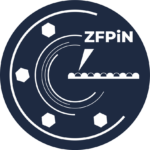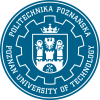2025

Reddig, Wiktoria; El-Ahmar, Semir; Ciuk, Tymoteusz; Prokopowicz, Rafał
Toward Radiation-Hard Magnetic Diagnostics: Testing Graphene Sensors for Tokamaks Conference
NEA Global Forum Rising Stars Workshop, Stockholm, December 10-12, 2025, (Oral presentation).
@conference{NEA_GF2025,
title = {Toward Radiation-Hard Magnetic Diagnostics: Testing Graphene Sensors for Tokamaks},
author = {Wiktoria Reddig and Semir El-Ahmar and Tymoteusz Ciuk and Rafał Prokopowicz},
url = {https://nano.put.poznan.pl/wp-content/uploads/2025/12/NEA_GF2025_WR.pdf},
year = {2025},
date = {2025-12-11},
urldate = {2025-12-11},
booktitle = {NEA Global Forum Rising Stars Workshop},
address = {Stockholm, December 10-12},
abstract = {As the urgency of addressing climate change grows, nuclear fusion is becoming one of the most promising long-term energy solutions. In magnetic confinement fusion reactors (especially tokamaks) accurate measurement of magnetic fields is essential for monitoring and control. This research explores the potential of advanced graphene-based sensors for this purpose, focusing on their performance in the extreme neutron radiation and high temperatures environment found inside a fusion reactor.
Hall-effect magnetic field sensors were manufactured in form of graphene grown on silicon carbide (SiC) and intercalated with a hydrogen layer. The sensors were coated with aluminium oxide for protection. These devices were then exposed to neutron radiation in the MARIA research reactor at Polish National Centre for Nuclear Research, and separately tested at high temperatures to simulate tokamak conditions.
After irradiation, electrical measurements and material analysis techniques (like Raman characterisation, Transmission Electron Microscopy and Density Functional Theory calculations) were utilised to study how neutron radiation affected the sensors. They revealed that the radiation had a marginal impact on graphene layer. However some performance loss was observed and we attribute it to deterioration of the hydrogen layer, which plays a key role in maintaining graphene’s useful properties by separating it from the substrate. Interestingly, heating the sensors to temperatures above 200C helped partially restore their electrical properties, likely by allowing surface diffusion of
hydrogen on the surface of SiC.
These results show that while neutron radiation can degrade sensor performance, some of the damage can be reversed with thermal treatment, though only to a certain radiation threshold. Understanding how radiation affects these materials will be crucial for developing reliable magnetic sensors that can operate inside future fusion reactors.},
note = {Oral presentation},
keywords = {},
pubstate = {published},
tppubtype = {conference}
}
Hall-effect magnetic field sensors were manufactured in form of graphene grown on silicon carbide (SiC) and intercalated with a hydrogen layer. The sensors were coated with aluminium oxide for protection. These devices were then exposed to neutron radiation in the MARIA research reactor at Polish National Centre for Nuclear Research, and separately tested at high temperatures to simulate tokamak conditions.
After irradiation, electrical measurements and material analysis techniques (like Raman characterisation, Transmission Electron Microscopy and Density Functional Theory calculations) were utilised to study how neutron radiation affected the sensors. They revealed that the radiation had a marginal impact on graphene layer. However some performance loss was observed and we attribute it to deterioration of the hydrogen layer, which plays a key role in maintaining graphene’s useful properties by separating it from the substrate. Interestingly, heating the sensors to temperatures above 200C helped partially restore their electrical properties, likely by allowing surface diffusion of
hydrogen on the surface of SiC.
These results show that while neutron radiation can degrade sensor performance, some of the damage can be reversed with thermal treatment, though only to a certain radiation threshold. Understanding how radiation affects these materials will be crucial for developing reliable magnetic sensors that can operate inside future fusion reactors.
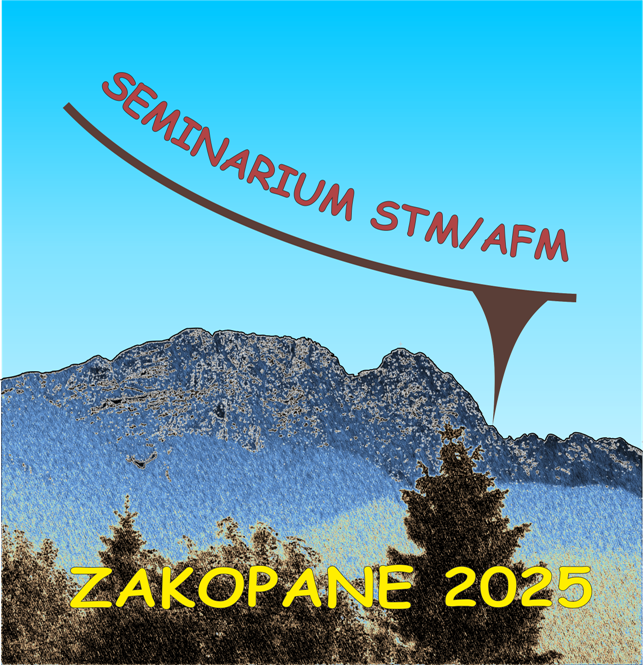
Kałuziak, Piotr; Kwiecień, Katarzyna; Raczyński, Jan; Nowicki, Marek; Majchrzycki, Łukasz; Szczęsny, Michał; Gawinkowski, Sylwester; Larowska-Zarych, Daria; El-Ahmar, Semir; Koczorowski, Wojciech
XIII Workshop on Applications of Scanning Probe Microscopy – STM/AFM 2025, Zakopane, 26 - 30 Listopada, 2025, (Oral presentation).
@conference{Zakopane25_PK,
title = {Surface Characterization of Thin-Layer Materials for Potential Applications in Physical Unclonable Functions},
author = {Piotr Kałuziak and Katarzyna Kwiecień and Jan Raczyński and Marek Nowicki and Łukasz Majchrzycki and Michał Szczęsny and Sylwester Gawinkowski and Daria Larowska-Zarych and Semir El-Ahmar and Wojciech Koczorowski},
url = {https://nano.put.poznan.pl/wp-content/uploads/2025/12/zakopane2025_PK.pdf},
year = {2025},
date = {2025-11-28},
urldate = {2025-11-28},
booktitle = {XIII Workshop on Applications of Scanning Probe Microscopy – STM/AFM 2025},
address = {Zakopane, 26 - 30 Listopada},
abstract = {Two-dimensional (2D) materials and thin semiconductor films exhibit unique properties that make them attractive for applications in electronics, sensing, and information security. Here, we investigate selected layered systems to explore their potential for physical unclonable functions (PUFs), focusing on characteristic nanoscale features revealed by Raman spectroscopy, AFM, and SEM.
Continuous PtSe2films covered with gold nanoparticles were studied using surface-enhanced Raman spectroscopy (SERS), revealing enhanced vibrational signatures. Additionally, AFM measurements confirmed low roughness at the nanoscale morphology. Exfoliated ZrS2 flakes were analyzed by conventional Raman spectroscopy and AFM techniques, highlighting thickness variations and different degrees of surface oxidation properties that appear highly specific to the sample. Finally, chemically modified InSb layers examined with AFM and SEM showed surface roughness variations and etching-induced morphological changes. These results demonstrate that intrinsic disorder, film morphology, and surface modifications can generate unique and irreproducible features. The combined use of SERS, Raman spectroscopy, AFM, and SEM provides a comprehensive framework for evaluating the suitability of thin-layer materials as candidates for secure PUF schemes.
Funding from the Ministry of Science and Higher Education under project no. 0512/SBAD/6220.
Funding from the Ministry of Science and Higher Education under project no. 0512/SBAD/2520.},
note = {Oral presentation},
keywords = {},
pubstate = {published},
tppubtype = {conference}
}
Continuous PtSe2films covered with gold nanoparticles were studied using surface-enhanced Raman spectroscopy (SERS), revealing enhanced vibrational signatures. Additionally, AFM measurements confirmed low roughness at the nanoscale morphology. Exfoliated ZrS2 flakes were analyzed by conventional Raman spectroscopy and AFM techniques, highlighting thickness variations and different degrees of surface oxidation properties that appear highly specific to the sample. Finally, chemically modified InSb layers examined with AFM and SEM showed surface roughness variations and etching-induced morphological changes. These results demonstrate that intrinsic disorder, film morphology, and surface modifications can generate unique and irreproducible features. The combined use of SERS, Raman spectroscopy, AFM, and SEM provides a comprehensive framework for evaluating the suitability of thin-layer materials as candidates for secure PUF schemes.
Funding from the Ministry of Science and Higher Education under project no. 0512/SBAD/6220.
Funding from the Ministry of Science and Higher Education under project no. 0512/SBAD/2520.

Przychodnia, Marta; Drechsler, Alina; Bazarnik, Maciej; Schlenhoff, Anika
STM/STS studies of single-atom Fe inclusions in MBE-grown monolayer MoS2/Gr/Ir(111) Conference
XIII Workshop on Applications of Scanning Probe Microscopy – STM/AFM 2025, Zakopane, 26 - 30 Listopada, 2025, (Oral presentation).
@conference{Zakopane25_MP,
title = {STM/STS studies of single-atom Fe inclusions in MBE-grown monolayer MoS2/Gr/Ir(111)},
author = {Marta Przychodnia and Alina Drechsler and Maciej Bazarnik and Anika Schlenhoff},
url = {https://nano.put.poznan.pl/wp-content/uploads/2025/12/zakopane2025_MP.pdf},
year = {2025},
date = {2025-11-28},
urldate = {2025-11-28},
booktitle = {XIII Workshop on Applications of Scanning Probe Microscopy – STM/AFM 2025},
address = {Zakopane, 26 - 30 Listopada},
abstract = {Transition metal dichalcogenides (TMDs) have drawn significant attention due to their scalability and the thickness-dependence of their electronic density of states (DOS). Moreover, dimensionally confined TMDs, mainly 2D monolayers (MLs), are highly sensitive to structural defects, such as vacancies, interstitial and substituent atoms. Even in very low-density regimes, these impurities significantly affect various properties by introducing stress and/or modifying the DOS. Consequently, there are ongoing efforts to engineer defects in TMDs to tune their electronic, magnetic, optical, and catalytic properties. While most of the current research focuses on naturally occurring defects in chemical vapor deposited TMDs, to improve control over defect engineering, we focus on intentional single-atom inclusions in TMDs grown by molecular beam epitaxy (MBE).
In this presentation, I summarize our scanning tunneling microscopy (STM) and spectroscopy (STS) studies of Fe inclusions in ML MoS2 on Gr/Ir(111), which we realize by co-evaporating Fe during MoS2 MBE growth. We identify the Fe inclusions upon comparison with naturally occurring defects found on the undoped MoS2 grown previously in the same UHV chamber. STS experiments reveal the presence of in-gap states arising from the incorporation of Fe atoms, whose spatial distributions are imaged by means of bias-dependent differential conductance mapping. Furthermore, resonant tunneling spectroscopy shows that the image potential states (IPS) are modified by the Fe inclusions, influencing the IPS’ energetic positions due to a variation in the local work function.
Funding from the Ministry of Science and Higher Education (Poland) within Project 0512/SBAD/2520.
},
note = {Oral presentation},
keywords = {},
pubstate = {published},
tppubtype = {conference}
}
In this presentation, I summarize our scanning tunneling microscopy (STM) and spectroscopy (STS) studies of Fe inclusions in ML MoS2 on Gr/Ir(111), which we realize by co-evaporating Fe during MoS2 MBE growth. We identify the Fe inclusions upon comparison with naturally occurring defects found on the undoped MoS2 grown previously in the same UHV chamber. STS experiments reveal the presence of in-gap states arising from the incorporation of Fe atoms, whose spatial distributions are imaged by means of bias-dependent differential conductance mapping. Furthermore, resonant tunneling spectroscopy shows that the image potential states (IPS) are modified by the Fe inclusions, influencing the IPS’ energetic positions due to a variation in the local work function.
Funding from the Ministry of Science and Higher Education (Poland) within Project 0512/SBAD/2520.

Reddig, Wiktoria; Ciuk, Tymoteusz; Szary, Maciej J.; Jagiełło, Jakub; Dobrowolski, Artur; Prokopowicz, Rafał; Weiss, Marek; Wzorek, Marek; El-Ahmar, Semir
XIII Workshop on Applications of Scanning Probe Microscopy – STM/AFM 2025, Zakopane, 26 - 30 Listopada, 2025, (Oral presentation).
@conference{Zakopane25_WR,
title = {Radiation Resilience of Graphene Based Heterostructures Insights from Multimodal Structure Characterization},
author = {Wiktoria Reddig and Tymoteusz Ciuk and Maciej J. Szary and Jakub Jagiełło and Artur Dobrowolski and Rafał Prokopowicz and Marek Weiss and Marek Wzorek and Semir El-Ahmar},
url = {https://nano.put.poznan.pl/wp-content/uploads/2025/12/zakopane2025_WR.pdf},
year = {2025},
date = {2025-11-27},
urldate = {2025-11-27},
booktitle = {XIII Workshop on Applications of Scanning Probe Microscopy – STM/AFM 2025},
address = {Zakopane, 26 - 30 Listopada},
abstract = {Enhancing the durability of magnetic field diagnostic electronics under fast-neutron irradiation requires materials capable of withstanding extreme defect formation. Dimensionality reduction offers a potential route, as two-dimensional systems inherently limit the development of collision cascades responsible for radiation damage in bulk materials. Graphene, with its two-dimensional nature and low neutron-collision cross section, embodies this concept. Yet, when integrated into a heterostructure, can
it maintain its intrinsic radiation resilience?
We explore the neutron radiation tolerance of an a-Al2O3/graphene/H-intercalated SiC(0001) heterostructure, combining reduced dimensionality with a conventional substrate platform. Using high-resolution transmission electron microscopy, Raman spectroscopy, electrical characterization and other techniques, we assess the material's structural and functional stability under fast-neutron fluences up to 2E18 n cm^-2 . Our findings show, the graphene layers exhibit negligible structural damage in comparison to bulk elements
Showing that graphene retains its structural integrity and electronic performance even under extreme neutron exposure, we suggest a viable route toward radiation-resilient sensor technologies. Such resilience is particularly crucial for future fusion energy systems, where long-term, reliable magnetic diagnostics will be key to successful reactor operation.
Funding from the Ministry of Science and Higher Education (Poland) for support under the project no. 0512/SBAD/2520.
Funding from the 'PhDBoost' Program for doctoral students of the Doctoral School of Poznan University of Technology (in 2024) from the University's subsidyfinancedfrom the funds of Ministry of Science and Higher Education.},
note = {Oral presentation},
keywords = {},
pubstate = {published},
tppubtype = {conference}
}
it maintain its intrinsic radiation resilience?
We explore the neutron radiation tolerance of an a-Al2O3/graphene/H-intercalated SiC(0001) heterostructure, combining reduced dimensionality with a conventional substrate platform. Using high-resolution transmission electron microscopy, Raman spectroscopy, electrical characterization and other techniques, we assess the material's structural and functional stability under fast-neutron fluences up to 2E18 n cm^-2 . Our findings show, the graphene layers exhibit negligible structural damage in comparison to bulk elements
Showing that graphene retains its structural integrity and electronic performance even under extreme neutron exposure, we suggest a viable route toward radiation-resilient sensor technologies. Such resilience is particularly crucial for future fusion energy systems, where long-term, reliable magnetic diagnostics will be key to successful reactor operation.
Funding from the Ministry of Science and Higher Education (Poland) for support under the project no. 0512/SBAD/2520.
Funding from the 'PhDBoost' Program for doctoral students of the Doctoral School of Poznan University of Technology (in 2024) from the University's subsidyfinancedfrom the funds of Ministry of Science and Higher Education.

Kwiecień, Katarzyna; Kałuziak, Piotr; Raczyński, Jan; Puchalska, Agnieszka; Dychalska, Anna; Chłopocka, Edyta; Kot, Dawid; Szybowicz, Mirosław; Jurczyszyn, Leszek; Dobrotvorska, Mariya V.; Lewandowski, Mikołaj; Koczorowski, Wojciech
Comparative analysis of group IV bulk TMDs' surface stability under ambient conditions Conference
XIII Workshop on Applications of Scanning Probe Microscopy – STM/AFM 2025, Zakopane, 26 - 30 Listopada, 2025, (Oral presentation).
@conference{Zakopane25_KK,
title = {Comparative analysis of group IV bulk TMDs' surface stability under ambient conditions},
author = {Katarzyna Kwiecień and Piotr Kałuziak and Jan Raczyński and Agnieszka Puchalska and Anna Dychalska and Edyta Chłopocka and Dawid Kot and Mirosław Szybowicz and Leszek Jurczyszyn and Mariya V. Dobrotvorska and Mikołaj Lewandowski and Wojciech Koczorowski},
url = {https://nano.put.poznan.pl/wp-content/uploads/2025/12/zakopane2025_KK.pdf},
year = {2025},
date = {2025-11-27},
booktitle = {XIII Workshop on Applications of Scanning Probe Microscopy – STM/AFM 2025},
address = {Zakopane, 26 - 30 Listopada},
abstract = {Group IV Transition Metal Dichalcogenides (TMDs) possess attractive electronic properties, such as a tunable band gap in the 1-2 eV range and predicted charge carrier mobilities in the thousands of cm^2 V^-1 s^-1. Unlike most TMDs, they are not chemically inert under ambient conditions. Oxidation can alter their surface properties and morphology, making it essential to study the changes as they impact technological processing of group IV TMDs and their performance in electronic devices. In our earlier work, we demonstrated that HfSe2 undergoes rapid oxidation, resulting in Se-rich blister formation, oxygen diffusion into the bulk of the crystal, and HfO2 growth on the surface. In this study, we extend our investigation to HfS2 and ZrS2, comparing the impact of ambient air exposure on their surfaces with that observed for HfSe2. Scanning electron microscopy (SEM) reveals morphological differences: while HfSe2 shows bright blister-like features, sulfides develop areas with different charge carrier concentration that gradually rise in number with increasing exposure time to ambient air. Raman spectroscopy (RS) indicates that the vibrational modes of HfS2 and ZrS2 remain mostly unaffected, suggesting higher chemical stability compared to HfSe2, whose RS modes change drastically as the surface oxidation progresses. Complementary X-ray photoemission spectroscopy (XPS) data describes the influence of the ambient air exposure on the investigated materials' surface chemical deposition. These results provide a comprehensive picture of the morphological and chemical differences in group IV TMD oxidation, highlighting the role of chemical composition in determining their surface stability, which affects their integration potential with silicon-based electronics.
Funding from of Ministry of Science and Higher Education under project no. 0512/SBAD/6220.
Funding from of Ministry of Science and Higher Education under project no. 0512/SBAD/2520.},
note = {Oral presentation},
keywords = {},
pubstate = {published},
tppubtype = {conference}
}
Funding from of Ministry of Science and Higher Education under project no. 0512/SBAD/6220.
Funding from of Ministry of Science and Higher Education under project no. 0512/SBAD/2520.

El-Ahmar, Semir; Szary, Maciej J.; Reddig, Wiktoria; Jagiełło, Jakub; Dobrowolski, Artur; Ziemba, Maciej; Prokopowicz, Rafał; Ciuk, Tymoteusz
Grafen epitaksjalny w energetyce jądrowej: wyzwania i możliwości wsparte technikami próżniowymi Conference
IX Kongres Polskiego Towarzystwa Próżniowego, Poznań, 25-26 września, 2025, (Oral presentation).
@conference{PTP2025_SA,
title = {Grafen epitaksjalny w energetyce jądrowej: wyzwania i możliwości wsparte technikami próżniowymi},
author = {Semir El-Ahmar and Maciej J. Szary and Wiktoria Reddig and Jakub Jagiełło and Artur Dobrowolski and Maciej Ziemba and Rafał Prokopowicz and Tymoteusz Ciuk},
url = {https://nano.put.poznan.pl/wp-content/uploads/2025/09/PTP2025_SA.pdf},
year = {2025},
date = {2025-09-26},
urldate = {2025-09-26},
booktitle = {IX Kongres Polskiego Towarzystwa Próżniowego},
address = {Poznań, 25-26 września},
abstract = {Dążenie do rozwoju reaktorów opartych na fuzji jądrowej wiąże się z koniecznością pogłębienia wiedzy na temat środowisk silnego promieniowania oraz pilnym opracowaniem technologii diagnostycznych odpornych na ekstremalne warunki radiacyjne. W miarę przesuwania granic technologicznych, materiały i układy pomiarowe wystawione są na działanie promieniowania o coraz większym natężeniu, co zbliża konwencjonalne rozwiązania do granic ich wytrzymałości. Wyzwanie to nabiera szczególnego znaczenia w kontekście praktycznej realizacji syntezy jądrowej jako źródła energii, gdzie niezawodne, odporne na promieniowanie czujniki – zwłaszcza magnetyczne – są kluczowe dla bezpiecznej i ciągłej kontroli procesów zachodzących wewnątrz reaktora. Nasze badania koncentrują się na eksploracji potencjału dwuwymiarowych (2D) struktur węglowych jako detektorów pola magnetycznego zdolnych do pracy w ekstremalnych warunkach środowiskowych, charakterystycznych dla przyszłych elektrowni termojądrowych. W tego typu reaktorach elektronika narażona będzie na wysokie temperatury oraz intensywne promieniowanie jonizujące, w tym neutronowe. Przedstawiamy wyniki eksperymentalnych badań dotyczących wpływu napromieniowania neutronowego na właściwości elektryczne układów opartych na grafenie epitaksjalnym. Wykorzystując min. metody próżniowe, wytworzyliśmy grafen quasi-swobodny z interkalacją wodorową na półizolacyjnych podłożach 4H-SiC(0001) i 6H-SiC(0001), pasywowanych warstwą Al2O3. Układy poddane zostały działaniu strumieni neutronów za pomocą badawczego reaktora jądrowego MARIA. Wśród kluczowych pytań pozostaje kwestia granicznej tolerancji na fluencję neutronów w systemach opartych na grafenie oraz to, czy ograniczona wymiarowość struktur 2D rzeczywiście zapewnia przewagę nad klasycznymi materiałami trójwymiarowymi. Szczególnie istotne jest także zrozumienie wpływu oddziaływań pomiędzy warstwami podłoża a warstwą grafenu w heterostrukturach 2D/3D, które mogą istotnie modyfikować — lub nawet ograniczać — korzyści wynikające z zastosowania architektury 2D. Odpowiedzi na te pytania są niezbędne do zaprojektowania nowej generacji elektroniki opartej na grafenie epitaksjalnym — zdolnej do niezawodnej pracy w warunkach intensywnego promieniowania, tam gdzie tradycyjne materiały i technologie mogą okazać się niewystarczające.
Funding from the Ministry of Science and Higher Education (Poland), Project No. 0512/SBAD/2520},
note = {Oral presentation},
keywords = {},
pubstate = {published},
tppubtype = {conference}
}
Funding from the Ministry of Science and Higher Education (Poland), Project No. 0512/SBAD/2520

Raczyński, Jan; Szczęsny, Michał; Koczorowski, Wojciech
PtSe2: From Layer to Device Conference
Workshop on Van der Waals Materials for Nanoelectronics, Poznan, September 1-2, 2025, (Invited lecture).
@conference{VdWM2025_JR,
title = {PtSe2: From Layer to Device},
author = {Jan Raczyński and Michał Szczęsny and Wojciech Koczorowski},
url = {https://nano.put.poznan.pl/wp-content/uploads/2025/10/WVWMN2025_JR.pdf},
year = {2025},
date = {2025-09-02},
urldate = {2025-09-02},
booktitle = {Workshop on Van der Waals Materials for Nanoelectronics},
address = {Poznan, September 1-2},
abstract = {The growing interest in 2D materials in recent years has intensified research into understanding their physicochemical properties and related systems. Among the transition metal dichalcogenides
(TMDs) currently under intensive investigation is PtSe2, which exhibits a high theoretical value of charge carrier mobility and semiconducting properties in the single monolayer,
and high surface chemical stability. These features indicate significant potential for applications, including planar architecture devices based on PtSe2 layers. Furthermore, the energy
band gap in the TMD depends on various factors, such as the number of PtSe2 monolayers, strain in the system, structural defects and doping. The ability to band gap engineering,
combined with the formation of effective electrical contacts, calls for a comprehensive analysis of the physicochemical properties of both PtSe2 and metal/PtSe2 systems.
This presentation will discuss in detail the properties of the PtSe2/Al2O3 systems, in terms of the TMD material thickness, determined using nonpolarized and polarized Raman spectroscopy
(RS) measurements. Further discussion will focus on the influence of the deposited metal layer on the physicochemical properties of the metal/PtSe2 system using spectroscopic (RS and
XPS) and microscopic (SEM and AFM) techniques. These measurements will be presented both for the systems after metallic layer deposition and followed by thermal treatment at 500°C for
30 min. The discussion will conclude with the presentation of the 3L PtSe2-based transfer line measurement structure, fabricated using controlled argon plasma etching. The argon plasma
etching method, combined with the RS measurements, allows for the precise analysis of the PtSe2 layer degradation dynamics.
Funding from the National Science Centre (Poland) Project No. 2019/35/O/ST5/01940
Funding from the Ministry of Education and Science (Poland), Project No. 0512/SBAD/2520},
note = {Invited lecture},
keywords = {},
pubstate = {published},
tppubtype = {conference}
}
(TMDs) currently under intensive investigation is PtSe2, which exhibits a high theoretical value of charge carrier mobility and semiconducting properties in the single monolayer,
and high surface chemical stability. These features indicate significant potential for applications, including planar architecture devices based on PtSe2 layers. Furthermore, the energy
band gap in the TMD depends on various factors, such as the number of PtSe2 monolayers, strain in the system, structural defects and doping. The ability to band gap engineering,
combined with the formation of effective electrical contacts, calls for a comprehensive analysis of the physicochemical properties of both PtSe2 and metal/PtSe2 systems.
This presentation will discuss in detail the properties of the PtSe2/Al2O3 systems, in terms of the TMD material thickness, determined using nonpolarized and polarized Raman spectroscopy
(RS) measurements. Further discussion will focus on the influence of the deposited metal layer on the physicochemical properties of the metal/PtSe2 system using spectroscopic (RS and
XPS) and microscopic (SEM and AFM) techniques. These measurements will be presented both for the systems after metallic layer deposition and followed by thermal treatment at 500°C for
30 min. The discussion will conclude with the presentation of the 3L PtSe2-based transfer line measurement structure, fabricated using controlled argon plasma etching. The argon plasma
etching method, combined with the RS measurements, allows for the precise analysis of the PtSe2 layer degradation dynamics.
Funding from the National Science Centre (Poland) Project No. 2019/35/O/ST5/01940
Funding from the Ministry of Education and Science (Poland), Project No. 0512/SBAD/2520
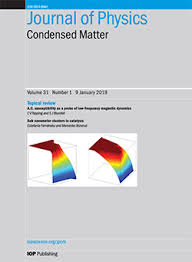
Szary, Maciej J.; El-Ahmar, Semir; Prokopowicz, Rafał; Ciuk, Tymoteusz
Reduced dimensionality, elevated tolerance? A perspective on 2D materials for fusion diagnostics Journal Article
In: Journal of Physics: Condensed Matter, vol. 37, pp. 321501, 2025.
@article{MS_IOP_2025,
title = {Reduced dimensionality, elevated tolerance? A perspective on 2D materials for fusion diagnostics},
author = {Maciej J. Szary and Semir El-Ahmar and Rafał Prokopowicz and Tymoteusz Ciuk},
doi = {10.1088/1361-648X/adf481},
year = {2025},
date = {2025-08-06},
journal = {Journal of Physics: Condensed Matter},
volume = {37},
pages = {321501},
abstract = {Whether in the distant reaches of outer space or deep within magnetic confinement fusion reactors, our exploration of high-energy particle radiation environments continues to evolve—driving an urgent need for diagnostic technologies capable of withstanding extreme radiation exposure. As these technological frontiers expand, materials are increasingly subjected to radiation intensities far beyond those encountered in previous decades, pushing conventional systems to their operational limits. This challenge is especially acute in the pursuit of practical fusion energy, where the development of resilient magnetic sensor technologies capable of sustained, reliable operation under intense neutron flux is essential. In this Perspective, we examine this challenge through the lens of condensed matter physics, proposing that reducing the dimensionality of sensing materials—from bulk to two-dimensional (2D) systems—offers a promising route to mitigate radiation-induced degradation. Lower dimensionality suppresses the formation of collision cascades, which are responsible for rapid defect accumulation in bulk materials, thereby offering a pathway toward radiation-tolerant sensor platforms. We focus on recent advances in graphene-based Hall sensors deployed in fast-neutron-radiation environments, where fluence levels up to 2 n cm−2 have been sustained with negligible structural damage, corresponding to a relative defect concentration below 0.01%. These findings underscore graphene’s potential as a candidate for neutron-radiation-resistant electronics. However, key open questions remain—most notably, the ultimate neutron fluence tolerance of graphene-based systems and the extent to which reduced dimensionality confers a measurable advantage over traditional three-dimensional (3D) materials. Additionally, we discuss the critical influence of substrate interactions in 2D/3D heterostructures, which may offset or complicate the benefits of 2D architectures. By addressing these challenges and identifying future directions, this article outlines a roadmap toward the development of graphene-based electronics capable of surviving—and performing—in the most extreme radiation environments, where conventional materials are prone to failure and low-dimensional systems may thrive.
Funding from the Ministry of Education and Science (Poland), Project No. 0512/SBAD/2520},
keywords = {},
pubstate = {published},
tppubtype = {article}
}
Funding from the Ministry of Education and Science (Poland), Project No. 0512/SBAD/2520
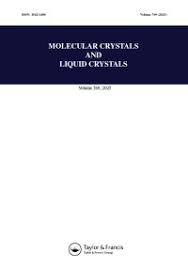
Shuryhin, Fedir; Biliak, Roman; Liakh-Kaguy, Natalia; Kost, Yaroslav; Sukhorebryi, Serhii; Ciuk, Tymoteusz; El-Ahmar, Semir
Investigation of graphene-metal contacts in Hall sensors based on QFS graphene Journal Article
In: Molecular Crystals and Liquid Crystals, pp. 1–9, 2025.
@article{nokey,
title = {Investigation of graphene-metal contacts in Hall sensors based on QFS graphene},
author = {Fedir Shuryhin and Roman Biliak and Natalia Liakh-Kaguy and Yaroslav Kost and Serhii Sukhorebryi and Tymoteusz Ciuk and Semir El-Ahmar
},
doi = {10.1080/15421406.2025.2540100},
year = {2025},
date = {2025-08-06},
journal = {Molecular Crystals and Liquid Crystals},
pages = {1–9},
abstract = {This article presents a study of the current-voltage characteristics of metal–graphene contacts in Hall sensors based on quasi-free-standing graphene (QFS graphene) grown on 4H-SiC with hydrogen intercalation. Various graphene-based Hall sensor designs are reviewed. The study focuses on the linearity of the I–V characteristics in the contact regions. Sensors with titanium–gold contacts and Al2O3 passivation were fabricated. Results show highly ohmic behavior and strong agreement with a linear model, indicating high contact quality. The findings highlight the potential of QFS-graphene Hall sensors for high-sensitivity, stable applications and form a basis for future studies.},
keywords = {},
pubstate = {published},
tppubtype = {article}
}

Kałużny, Jarosław; Pielecha, Ireneusz; Błaszkiewicz, Paulina; Boncel, Sławomir; Marek, Adam; Terzyk, Artur P.; Korczeniewski, Emil; Runka, Tomasz; Nowicki, Marek; Giedrowicz, Marcin
Carbon nanotubes as biofuel additives enabling advanced combustion modulation strategies Journal Article
In: Carbon, vol. 244, pp. 120686, 2025.
@article{JK_Carb_2025,
title = {Carbon nanotubes as biofuel additives enabling advanced combustion modulation strategies},
author = {Jarosław Kałużny and Ireneusz Pielecha and Paulina Błaszkiewicz and Sławomir Boncel and Adam Marek and Artur P. Terzyk and Emil Korczeniewski and Tomasz Runka and Marek Nowicki and Marcin Giedrowicz},
doi = {10.1016/j.carbon.2025.120686},
year = {2025},
date = {2025-08-04},
journal = {Carbon},
volume = {244},
pages = {120686},
abstract = {This study investigates the effect of carbon nanotubes (CNTs) as ethanol fuel additives in a new class of bionanofuels for internal combustion and jet engines. In-cylinder pressure and thermodynamic behavior, including the heat release rate (HRR), were analyzed using a rapid compression machine (RCM) for pure ethanol, ethanol enriched with CNTs (2.5 mg/L), ethanol containing spherical gold nanoparticles (AuNPs, 0.01 g/L), and gasoline. CNT-enriched ethanol reduced maximum in-cylinder pressure by up to 13 % compared to pure ethanol and lowered the peak HRR by up to 43 % at low injection doses. The flame brightness, quantified by high-speed imaging, was reduced by over 50 %, indicating suppressed soot formation. AuNPs exhibited an opposite trend: after a short ignition delay, they increased HRR by up to 28 %, attributed to catalytic activity. CNTs, in contrast, acted via physical thermal dissipation, i.e., cooling of hot-spots through axial conductivity, and scavenging reactive free-radicals. Optical analysis also showed a smaller flame area and slower propagation speed for CNT fuels. These findings highlight the dual benefit of CNTs: enabling smoother combustion with reduced NOx and particulate precursors, and oxidizing cleanly in-cylinder, offering a scalable, environmentally favorable approach to combustion control in next-generation bionanofuels.},
keywords = {},
pubstate = {published},
tppubtype = {article}
}
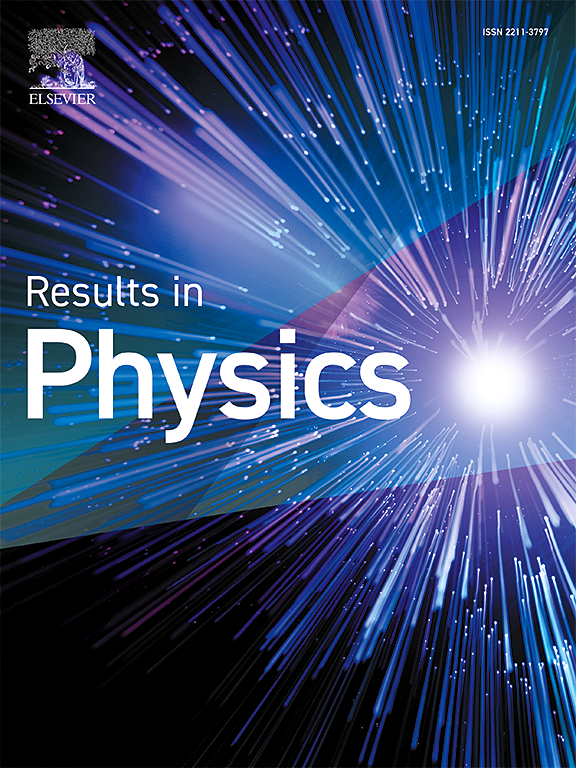
Jagiełło, Jakub; Dobrowolski, Artur; Ciuk, Tymoteusz; Prokopowicz, Rafał; Bieńkowska, Barbara; Włodarczyk, Jakub; El-Ahmar, Semir; Szary, Maciej J.; Szybowicz, Mirosław
In: Results in Physics, vol. 75, pp. 108332, 2025.
@article{JJ_RiP_2025,
title = {Dosimetric platform and a genuine Raman protocol for passive estimation of fast-neutron fluence in irradiated SiC and SiC topped with epitaxial graphene},
author = {Jakub Jagiełło and Artur Dobrowolski and Tymoteusz Ciuk and Rafał Prokopowicz and Barbara Bieńkowska and Jakub Włodarczyk and Semir El-Ahmar and Maciej J. Szary and Mirosław Szybowicz},
doi = {10.1016/j.rinp.2025.108332},
year = {2025},
date = {2025-06-27},
journal = {Results in Physics},
volume = {75},
pages = {108332},
abstract = {The article introduces a genuine ex-situ measurement protocol to estimate the integrated flux of mostly fast (1-2 MeV) neutrons. It is verified up to the fluence of 6.5 × 1018 n/cm2. A dedicated dosimetric platform comprises p-type hydrogen-intercalated quasi-free-standing epitaxial Chemical Vapor Deposition graphene on semi-insulating vanadium-compensated nominally on-axis 6H-SiC(0001) and a 100-nm-thick atomic-layerdeposited amorphous aluminum oxide encapsulation. The methodology correlates the total area under the averaged Raman spectra of SiC, between 60 cm-1 and 1200 cm-1, upon prior normalization to the maximum value of the longitudinal optical mode at 964 cm-1. The patterned a-Al2O3/QFS-graphene/6H-SiC(0001) system offers two verification mechanisms — one within the graphene mesa and the other outside. Following the protocol, one can read the neutron fingerprint in the material and relate it to the integrated flux. The passive character of the method eliminates the radiological hazards associated with traditional activation methods. The approach enables localized and precise fluence control in fissile and thermonuclear facilities with a Root Mean Squared Percentage Error of the fitted model of approximately 4%.
Funding from the Ministry of Education and Science (Poland), Project No. 0512/SBAD/2520 and Project No. 0512/SBAD/2551},
keywords = {},
pubstate = {published},
tppubtype = {article}
}
Funding from the Ministry of Education and Science (Poland), Project No. 0512/SBAD/2520 and Project No. 0512/SBAD/2551
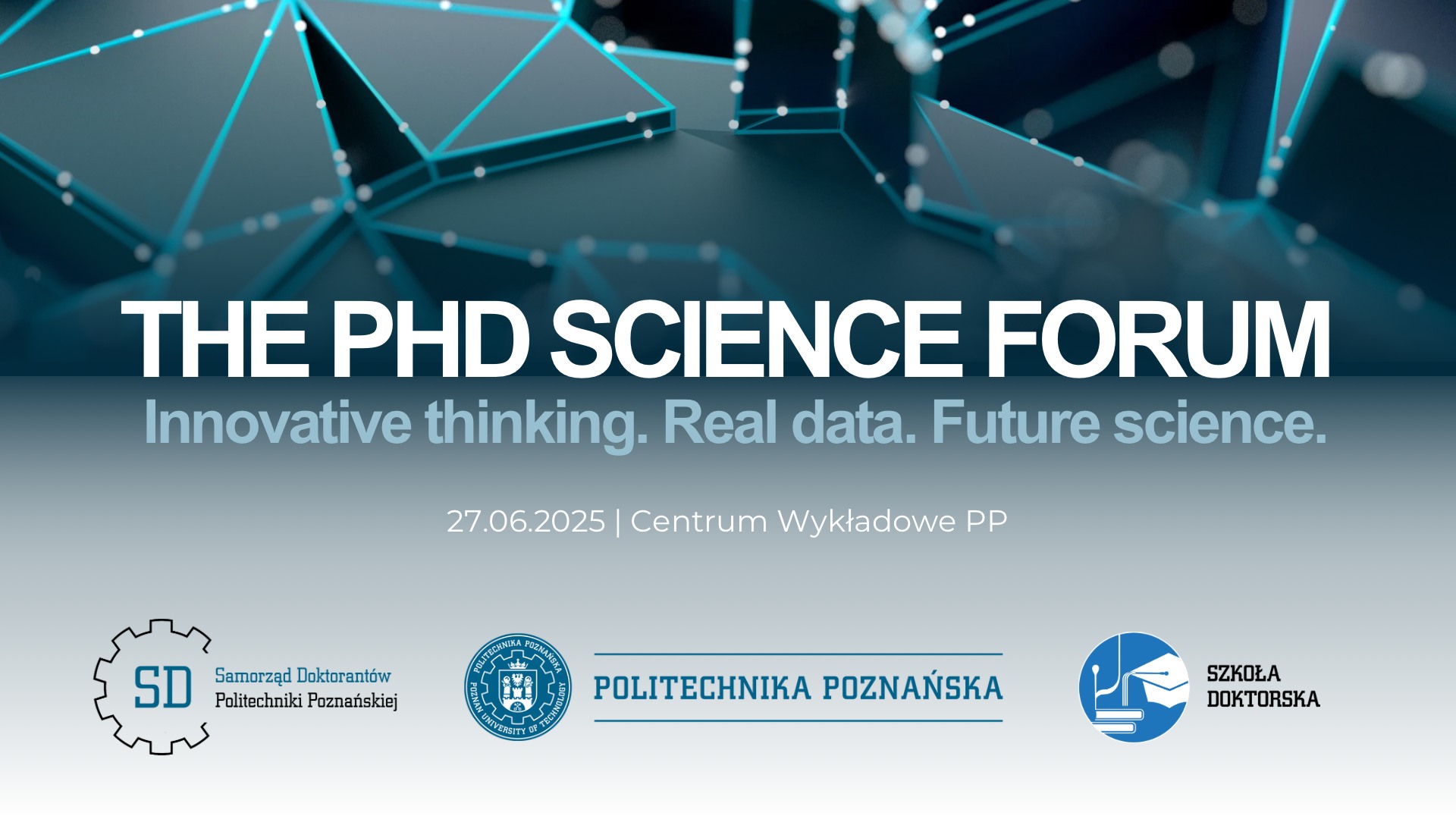
Reddig, Wiktoria; El-Ahmar, Semir; Prokopowicz, Rafał; Ciuk, Tymoteusz
In the heart of the reactor: testing graphene for neutron-resilient electronics Conference
The PhD Science Forum Innovative thinking. Real data. Future science., Poznan, June, 27, 2025, (Poster presentation).
@conference{PhD_SF2025_WR,
title = {In the heart of the reactor: testing graphene for neutron-resilient electronics},
author = {Wiktoria Reddig and Semir El-Ahmar and Rafał Prokopowicz and Tymoteusz Ciuk},
url = {https://nano.put.poznan.pl/wp-content/uploads/2025/07/PhD_SF2025_WR.pdf},
year = {2025},
date = {2025-06-27},
booktitle = {The PhD Science Forum Innovative thinking. Real data. Future science.},
address = {Poznan, June, 27},
abstract = {As the urgency of climate change accelerates, nuclear fusion emerges as a promising long-term energy solution. Among fusion technologies, magnetic confinement systems like tokamaks rely heavily on accurate magnetic field diagnostics. This work explores the development of Hall effect graphene-based magnetic sensors designed to operate in the extreme conditions found inside fusion reactors.
The research focuses on the performance of graphene-based sensors exposed to high temperatures and neutron radiation—two key stressors in fusion environments. To fabricate the sensors, hydrogenintercalated quasi-free-standing (QFS) graphene was grown on semi-insulating 4H-SiC(0001) and 6HSiC(0001) substrates and then coated with a protective Al2O3 layer. Neutron irradiation experiments were carried out at the MARIA reactor, operated by the Polish National Center for Nuclear Research, while thermal effects were evaluated in a separate study [5]. Measurements using the Hall effect, micro-Raman spectroscopy, and density functional theory indicate that the primary cause of performance degradation after irradiation is the loss of hydrogen from the intercalated
layer. This hydrogen depletion disrupts the unique electronic properties of QFS graphene. However, the research also shows that thermal annealing above 200◦C can partially reverse this damage—likely through hydrogen diffusion at elevated temperatures. The effectiveness of recovery depends on how much hydrogen was lost during irradiation [4]. Understanding these degradation and recovery mechanisms is essential for assessing the long-term viability of graphene-based sensors for magnetic diagnostics in fusion reactors and
other high-radiation environments
Funding from the Ministry of Science and Higher Education (Poland), Project No. 0512/SPHD/2501},
note = {Poster presentation},
keywords = {},
pubstate = {published},
tppubtype = {conference}
}
The research focuses on the performance of graphene-based sensors exposed to high temperatures and neutron radiation—two key stressors in fusion environments. To fabricate the sensors, hydrogenintercalated quasi-free-standing (QFS) graphene was grown on semi-insulating 4H-SiC(0001) and 6HSiC(0001) substrates and then coated with a protective Al2O3 layer. Neutron irradiation experiments were carried out at the MARIA reactor, operated by the Polish National Center for Nuclear Research, while thermal effects were evaluated in a separate study [5]. Measurements using the Hall effect, micro-Raman spectroscopy, and density functional theory indicate that the primary cause of performance degradation after irradiation is the loss of hydrogen from the intercalated
layer. This hydrogen depletion disrupts the unique electronic properties of QFS graphene. However, the research also shows that thermal annealing above 200◦C can partially reverse this damage—likely through hydrogen diffusion at elevated temperatures. The effectiveness of recovery depends on how much hydrogen was lost during irradiation [4]. Understanding these degradation and recovery mechanisms is essential for assessing the long-term viability of graphene-based sensors for magnetic diagnostics in fusion reactors and
other high-radiation environments
Funding from the Ministry of Science and Higher Education (Poland), Project No. 0512/SPHD/2501

Reddig, Wiktoria; Ciuk, Tymoteusz; Prokopowicz, Rafał; El-Ahmar, Semir
The impact of neutron radiation and high temperatures on graphene-based magnetic field sensors Conference
European Nuclear Young Generation Forum 2025, Zagreb, June, 2-6, 2025, (Oral presentation ).
@conference{ENYGF_2025,
title = {The impact of neutron radiation and high temperatures on graphene-based magnetic field sensors},
author = {Wiktoria Reddig and Tymoteusz Ciuk and Rafał Prokopowicz and Semir El-Ahmar},
url = {https://nano.put.poznan.pl/wp-content/uploads/2025/07/ENYGF-25-Paper_Reddig_rev2.pdf},
year = {2025},
date = {2025-06-02},
urldate = {2025-06-02},
booktitle = {European Nuclear Young Generation Forum 2025},
address = {Zagreb, June, 2-6},
abstract = {This paper presents new findings on the electrical characterisation of epitaxial graphene-based radiation-resistant magnetic field sensors following exposure to a neutron fluence of 4.0 × 10^18 n/cm² — twice the highest fluence previously examined. The collected results have been framed in the context of existing research. Additionally, the paper outlines future research directions aimed at further investigating the performance of these sensors under varying radiation conditions and exploring ways to enhance their resilience for practical applications.
Funding from the Ministry of Science and Higher Education (Poland), Project No. 0512/SBAD/2520 and 0512/SPHD/2501},
note = {Oral presentation
},
keywords = {},
pubstate = {published},
tppubtype = {conference}
}
Funding from the Ministry of Science and Higher Education (Poland), Project No. 0512/SBAD/2520 and 0512/SPHD/2501
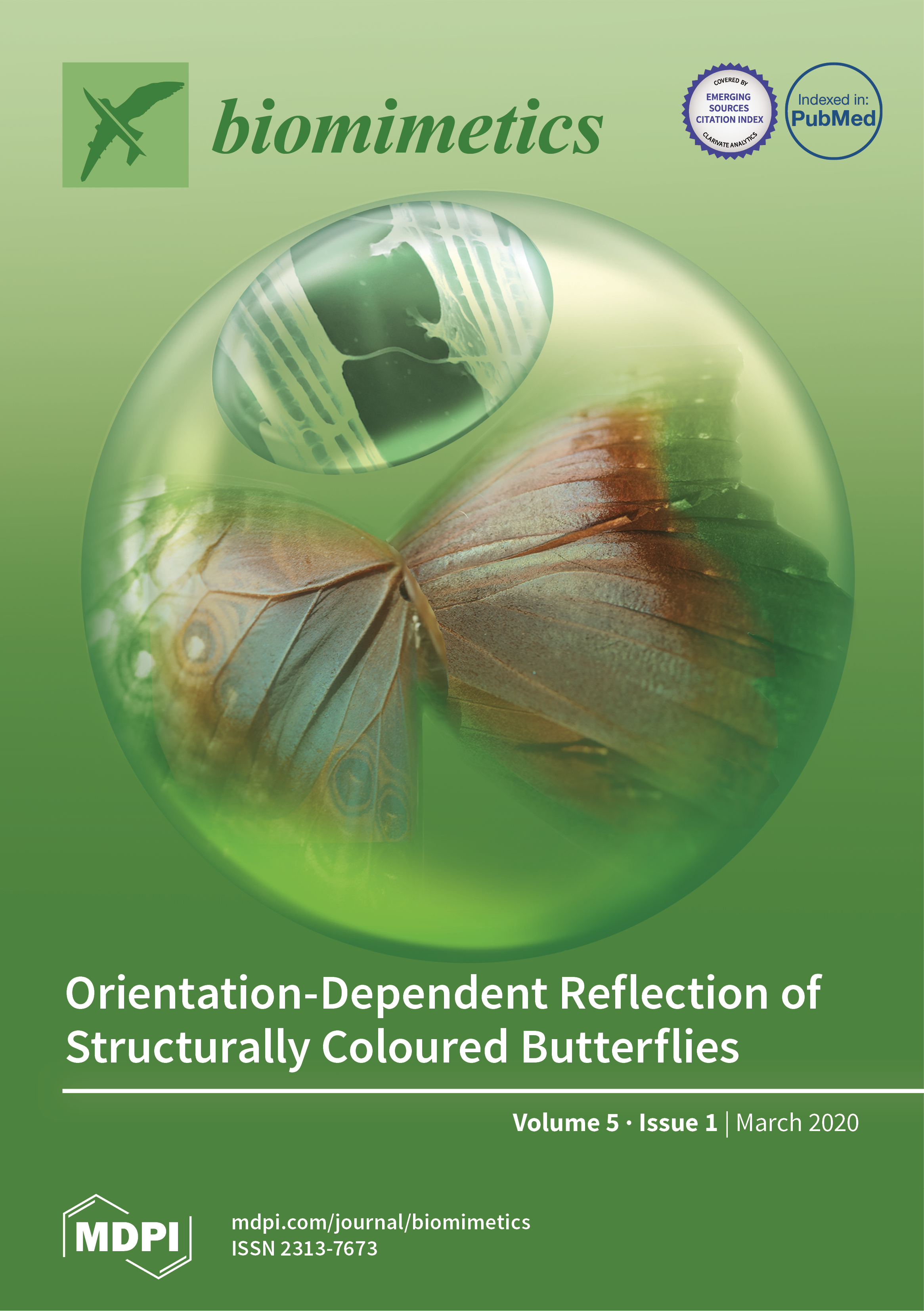
Leśniewski, Bartosz; Kopani, Martin; Szczurek, Anna; Matczak, Michał; Dubowik, Janusz; Kotula, Martyna; Kubiak, Anita; Tsurkan, Dmitry; Romańczuk-Ruszyk, Eliza; Nowicki, Marek; Nowacki, Krzysztof; Petrenko, Iaroslav; Ehrlich, Hermann
Development of Magnetic Sponges Using Steel Melting on 3D Carbonized Spongin Scaffolds Under Extreme Biomimetics Conditions Journal Article
In: Biomimetics, vol. 10, iss. 6, pp. 350, 2025.
@article{Nowicki_Biomim_2025,
title = {Development of Magnetic Sponges Using Steel Melting on 3D Carbonized Spongin Scaffolds Under Extreme Biomimetics Conditions},
author = {Bartosz Leśniewski and Martin Kopani and Anna Szczurek and Michał Matczak and Janusz Dubowik and Martyna Kotula and Anita Kubiak and Dmitry Tsurkan and Eliza Romańczuk-Ruszyk and Marek Nowicki and Krzysztof Nowacki and Iaroslav Petrenko and Hermann Ehrlich},
doi = {10.3390/biomimetics10060350},
year = {2025},
date = {2025-05-28},
journal = {Biomimetics},
volume = {10},
issue = {6},
pages = {350},
abstract = {This study presents a novel approach to fabricating magnetic sponge-like composites by melting various types of steel onto three-dimensional (3D) carbonized spongin scaffolds under extreme biomimetic conditions. Spongin, a renewable marine biopolymer with high thermal stability, was carbonized at 1200 °C to form a turbostratic graphite matrix capable of withstanding the high-temperature steel melting process (1450–1600 °C). The interaction between molten steel vapors and the carbonized scaffolds resulted in the formation of nanostructured iron oxide (primarily hematite) coatings, which impart magnetic properties to the resulting composites. Detailed characterization using SEM-EDX, HRTEM, FT-IR, and XRD confirmed the homogeneous distribution of iron oxides on and within the carbonized fibrous matrix. Electrochemical measurements further demonstrated the electrocatalytic potential of the composite, particularly the sample modified with stainless steel 316L—for the hydrogen evolution reaction (HER), offering promising perspectives for green hydrogen production. This work highlights the potential of extreme biomimetics to create functional, scalable, and sustainable materials for applications in catalysis, environmental remediation, and energy technologies.
Funding from theMinistry of Science and Higher Education, (Poland), Project No. 0911/SBAD/2502},
keywords = {},
pubstate = {published},
tppubtype = {article}
}
Funding from theMinistry of Science and Higher Education, (Poland), Project No. 0911/SBAD/2502
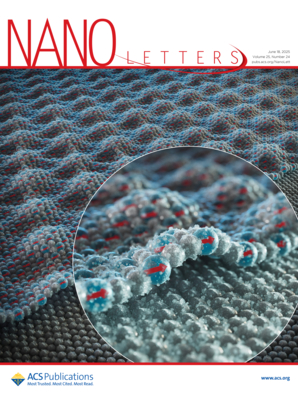
Przychodnia, Marta; Bazarnik, Maciej
Ferromagnetism in Two-Dimensional Dysprosium−Platinum Surface Alloy Journal Article
In: Nano Letters, vol. 25, iss. 24, pp. 9519, 2025.
@article{Przychodnia_NL_2025,
title = {Ferromagnetism in Two-Dimensional Dysprosium−Platinum Surface Alloy},
author = {Marta Przychodnia and Maciej Bazarnik},
doi = {10.1021/acs.nanolett.5c00262},
year = {2025},
date = {2025-05-17},
urldate = {2025-05-17},
journal = {Nano Letters},
volume = {25},
issue = {24},
pages = {9519},
abstract = {In this study, we comprehensively analyze single and triplelayers of a new two-dimensional surface alloy, namely DyPt2. Both areferromagnetic materials with an in-plane easy magnetization axis and lowCurie temperature on the order of a few Kelvins. Magnetic and electronicproperties confirm weak interlayer coupling and the dominance ofinteractions within alloy layers. Atomic-scale investigation proved nearlythe same atomic structure of the termination layer and varying moirépatterns. The electronic structures of single and triple layer DyPt2 are similar,consisting of a mixture of Dy and Pt electronic states. The intensity of theseelectronic states varies within the moiré pattern, similar to the surface localwork function, demonstrating modulated coupling between the surface alloyand the substrate. The presented results provide essential knowledge for further research of this system in terms of its application inthe growth of densely packed arrays of magnetic clusters and molecules.
Funding from the Ministry of Education and Science (Poland), Project No. 0512/SBAD/2520
Funding from the National Science Centre (Poland) Project No. 2019/33/N/ST5/01711 },
keywords = {},
pubstate = {published},
tppubtype = {article}
}
Funding from the Ministry of Education and Science (Poland), Project No. 0512/SBAD/2520
Funding from the National Science Centre (Poland) Project No. 2019/33/N/ST5/01711
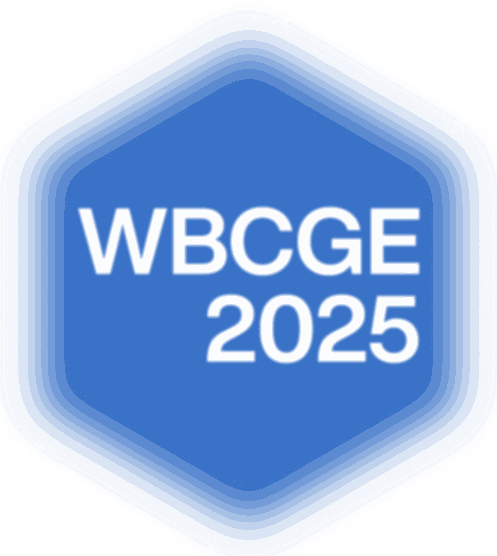
El-Ahmar, Semir; Szary, Maciej J.; Reddig, Wiktoria; Jagiełło, Jakub; Prokopowicz, Rafał; Ziemba, Maciej; Dobrowolski, Artur; Ciuk, Tymoteusz
Epitaxial graphene technology for the future nuclear industry Conference
Workshop on Bulk Crystal Growth and Epitaxy (WBCGE), Warsaw, May 15-16, 2025, (Invited lecture).
@conference{WBCGE2025_SA,
title = {Epitaxial graphene technology for the future nuclear industry},
author = {Semir El-Ahmar and Maciej J. Szary and Wiktoria Reddig and Jakub Jagiełło and Rafał Prokopowicz and Maciej Ziemba and Artur Dobrowolski and Tymoteusz Ciuk},
url = {https://nano.put.poznan.pl/wp-content/uploads/2025/05/WBCGE2025_SA.pdf},
year = {2025},
date = {2025-05-16},
urldate = {2025-05-16},
booktitle = {Workshop on Bulk Crystal Growth and Epitaxy (WBCGE)},
address = {Warsaw, May 15-16},
abstract = {In the development of magnetically confined fusion reactor technologies, our understanding of high-energy particle radiation environments is continually advancing. This creates an urgent need for diagnostic technologies that can endure extreme radiation exposure. As these technological boundaries expand, materials face radiation intensities that far exceed those encountered in previous decades, pushing conventional systems to their operational limits. This challenge is especially critical in the pursuit of practical fusion energy, where the creation of robust magnetic sensor technologies capable of continuous and reliable operation under intense neutron flux is essential. Our research explores the potential of using two-dimensional (2D) carbon structures as magnetic field detectors capable of operating in the extreme conditions of future thermonuclear power plants. In such reactors, electronics will be exposed to high temperatures and radiation damage. We demonstrate the experimental study on the impact of neutron radiation and determine its influence on the electrical parameters of epitaxial graphene-based systems. We have conducted preliminary research to investigate the impact of high temperature and neutron radiation. For this purpose, we fabricated a hydrogen-intercalated quasi-free-standing graphene on semi-insulating 4H-SiC(0001) and 6H SiC(0001), passivated with an Al2O3 layer. The systems were exposed to neutron fluxes using the MARIA research nuclear reactor. Key open questions include the ultimate neutron fluence tolerance of graphene-based systems and whether the reduced dimensionality offers a significant advantage over traditional 3D materials. Additionally, it's crucial to consider the impact of substrate interactions in 2D/3D heterostructures, as these can undermine or complicate the benefits of 2D architectures. By addressing these challenges and identifying future directions, we can develop a roadmap for epitaxial graphene-based electronics that can withstand and operate reliably in extreme radiation environments, where conventional materials are likely to fail.
Funding from the Ministry of Education and Science (Poland), Project No. 0512/SBAD/2520},
note = {Invited lecture},
keywords = {},
pubstate = {published},
tppubtype = {conference}
}
Funding from the Ministry of Education and Science (Poland), Project No. 0512/SBAD/2520
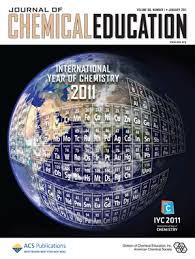
Szawioła, Gustaw; Mieloch, Szymon; Stefańska, Danuta; Głowacki, Przemysław; Frajtak, Agata; Michalczyk, Jędrzej; Murawski, Krzysztof; Pruchlat, Andrzej; Raczyński, Jan; Schmidt, Michał; Sobkowski, Jerzy; Wosicki, Maksymilian; Biadasz, Andrzej; Buczek, Adam; Dychalska, Anna; Mazarewicz, Piotr; Szybowicz, Mirosław
Thermal Effects in Optically Detected Magnetic Resonance of Nitrogen Vacancies in Diamond: A Quantum Thermometer for a Graduate Teaching Lab Journal Article
In: Journal of Chemical Education, vol. 102, iss. 5, pp. 1949-1959, 2025.
@article{GS_2025,
title = {Thermal Effects in Optically Detected Magnetic Resonance of Nitrogen Vacancies in Diamond: A Quantum Thermometer for a Graduate Teaching Lab},
author = {Gustaw Szawioła and Szymon Mieloch and Danuta Stefańska and Przemysław Głowacki and Agata Frajtak and Jędrzej Michalczyk and Krzysztof Murawski and Andrzej Pruchlat and Jan Raczyński and Michał Schmidt and Jerzy Sobkowski and Maksymilian Wosicki and Andrzej Biadasz and Adam Buczek and Anna Dychalska and Piotr Mazarewicz and Mirosław Szybowicz},
doi = {10.1021/acs.jchemed.4c01434},
year = {2025},
date = {2025-04-17},
urldate = {2025-04-17},
journal = { Journal of Chemical Education},
volume = {102},
issue = {5},
pages = {1949-1959},
abstract = {This work reports a study of thermal effects in nitrogen vacancies in diamond using the optically detected continuous wave magnetic resonance (cw-ODMR) method. Changes in the ODMR signal induced by heating the diamond sample with both laser light at various powers and by a simple heater were investigated and analyzed. The influence of heating on the ODMR signal was measured for two types of synthetic diamond powder─a low cost microcrystalline powder (particle diameters ca. 80 μm) and a high purity nanodiamond powder (particle diameters ca. 140 nm). The experimental setup can be viewed as a pedagogical quantum thermometer. A number of cost-effective components were used, e.g., a self-constructed confocal microscope, and the Raspberry Pi 4B microcomputer in an experiment control and data acquisition system, as well as an inexpensive microwave modulator, analog to digital converter, and a heating plate.},
keywords = {},
pubstate = {published},
tppubtype = {article}
}
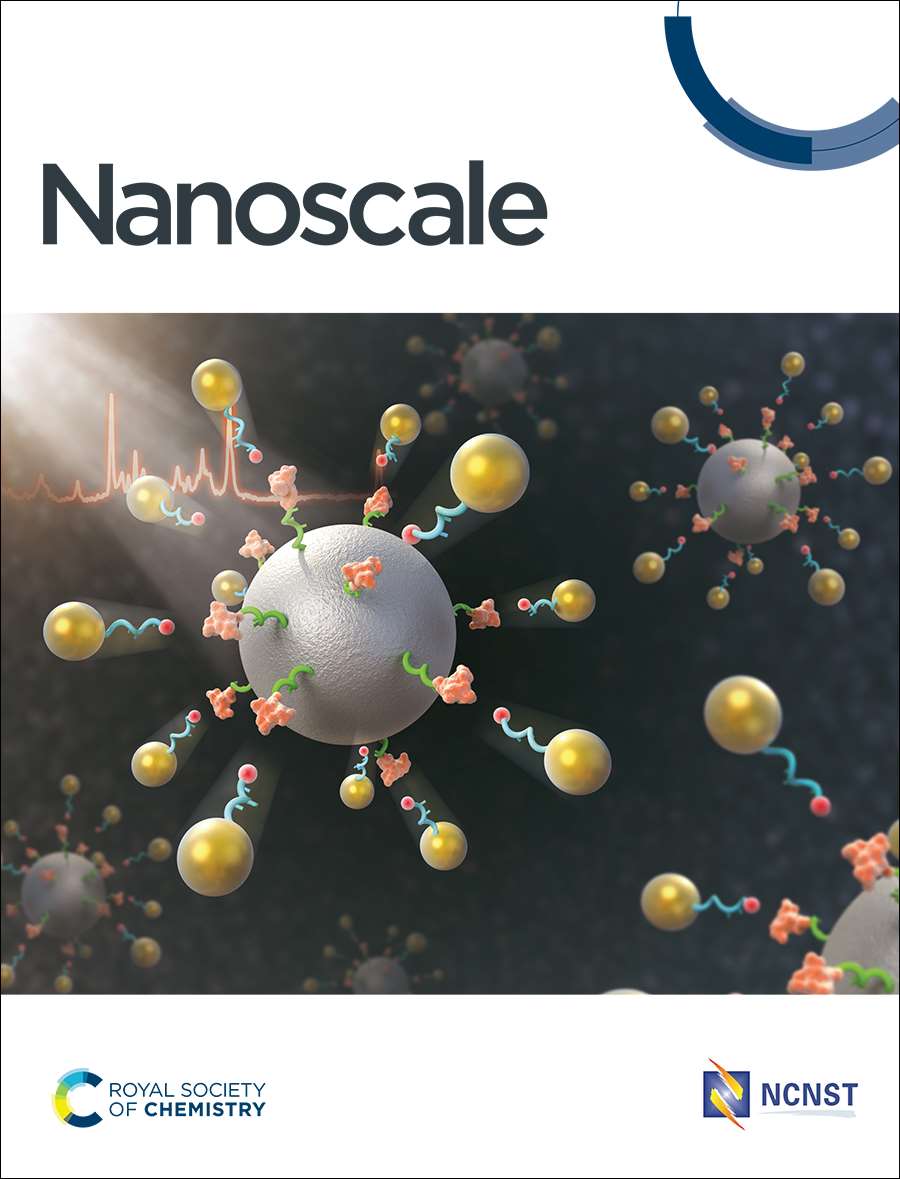
Raczyński, Jan; Nowaczyk, Jakub; Nowak, Ewelina; El-Ahmar, Semir; Chłopocka, Edyta; Szybowicz, Mirosław; Koczorowski, Wojciech
Thermally induced correlation effects studied by Raman spectroscopy in PtSe2/Al2O3 systems Journal Article
In: Nanoscale, vol. 17, iss. 20, pp. 12810, 2025.
@article{Raczynski_Nanoscale_2025,
title = {Thermally induced correlation effects studied by Raman spectroscopy in PtSe2/Al2O3 systems},
author = {Jan Raczyński and Jakub Nowaczyk and Ewelina Nowak and Semir El-Ahmar and Edyta Chłopocka and Mirosław Szybowicz and Wojciech Koczorowski},
doi = {10.1039/d4nr04062g},
year = {2025},
date = {2025-04-15},
urldate = {2025-04-15},
journal = {Nanoscale},
volume = {17},
issue = {20},
pages = {12810},
abstract = {In this paper, we report the analysis of the Raman spectroscopy results of PtSe2 layers (ranging from 1 to 10 layers) deposited on an Al2O3 substrate, compared to those of the sub-micron thin flake and bulk PtSe2. The positions of typical PtSe2 Raman modes and the integral intensity ratios of the A1g and E1g bands are compared and discussed for all the systems considered in the temperature range from room temperature to 520 K. Moreover, the correlation plot of E1g and A1g is used to analyse the correlations of the dominant Raman modes in the PtSe2/Al2O3 systems, in which the frequency position (in-plane to out-of-plane) ratio exhibits a well-defined linear dependence on temperature.
Funding from the National Science Centre (Poland) Project No. 2019/35/O/ST5/01940},
keywords = {},
pubstate = {published},
tppubtype = {article}
}
Funding from the National Science Centre (Poland) Project No. 2019/35/O/ST5/01940

Chłopocka, Edyta; Szybowicz, Mirosław; Szafraniak-Wiza, Izabela; Stachowiak, Alicja; Koczorowski, Wojciech; Robakowska, Mariola
The influence of synthesis method on LaFeO3 and LaMnO3 powder properties Journal Article
In: Ceramics International, vol. 51, iss. 18, pp. 25552-25559, 2025.
@article{CeramWK_2025,
title = {The influence of synthesis method on LaFeO3 and LaMnO3 powder properties},
author = {Edyta Chłopocka and Mirosław Szybowicz and Izabela Szafraniak-Wiza and Alicja Stachowiak and Wojciech Koczorowski and Mariola Robakowska},
doi = {10.1016/j.ceramint.2025.03.237},
year = {2025},
date = {2025-03-18},
journal = {Ceramics International},
volume = {51},
issue = {18},
pages = {25552-25559},
abstract = {Recently, searching for a lead-free inorganic alternative to organic-inorganic perovskite materials has been one of the main scientific issues in photovoltaics. Proposed LaMnO3 and LaFeO3 are narrow-band Mott insulators with a perovskite-like structure. In this work, the structural analysis of powders prepared by two different methods, i.e. sol-gel and mechanochemical synthesis, has been carried out. The characteristic temperatures in the sol-gel process have been determined using thermogravimetric analysis. The morphology of powders was observed with a scanning electron microscope. X-ray diffraction analysis enabled phase identification and subsequent determination of unit cell parameters using Rietveld refinement. Two complementary methods, Raman and Fourier-transform infrared spectroscopies, have been used to assess the structural differences between the samples. The obtained results suggest a significant influence of the synthesis method on the final powders’ properties.},
keywords = {},
pubstate = {published},
tppubtype = {article}
}
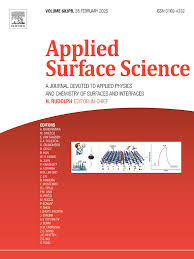
Kwiecień, Katarzyna; Raczyński, Jan; Puchalska, Agnieszka; Nowak, Ewelina; Chłopocka, Edyta; Kot, Dawid; Szybowicz, Mirosław; Jurczyszyn, Leszek; Koczorowski, Wojciech
The effects of short-term air exposure of the monocrystal HfSe2 surface Journal Article
In: Applied Surface Science, vol. 690, pp. 162546, 2025.
@article{Kwiecien_APSUSC_2025,
title = {The effects of short-term air exposure of the monocrystal HfSe2 surface},
author = {Katarzyna Kwiecień and Jan Raczyński and Agnieszka Puchalska and Ewelina Nowak and Edyta Chłopocka and Dawid Kot and Mirosław Szybowicz and Leszek Jurczyszyn and Wojciech Koczorowski},
doi = {10.1016/j.apsusc.2025.162546},
year = {2025},
date = {2025-02-01},
urldate = {2025-02-01},
journal = {Applied Surface Science},
volume = {690},
pages = {162546},
abstract = {We report the impact of short-term sequential exposure to air–atmosphere conditions on the mechanically exfoliated surface of HfSe2 monocrystal. Our scanning electron microscopy studies show the early surface
oxidation dynamics with a rapid increase of the Se-rich blister coverage. Further X-ray photoemission and energy dispersive spectroscopy measurements reveal a progressive diffusion of O atoms into the bulk and
HfO2 layer formation on the surface during the exposure time. Finally, Raman spectroscopy measurements confirm the coexistence of HfSe2 and HfO2 on the surface. However, the Raman spectroscopy technique does
not allow quantitative determination of the degree of short-term surface oxidation. Additionally, we confirm the conclusions drawn from the experimental results with the results of the density functional theory calculations
of the O/HfSe2 adsorption system. The presented results hold substantial technological significance from the point of view of the application of HfSe2 in electronics by filling the gap in the early oxidation dynamics under ambient conditions.
Funding from the Ministry of Education and Science (Poland), Project No. 0512/SBAD/2420 and 0612/SBAD/6215},
keywords = {},
pubstate = {published},
tppubtype = {article}
}
oxidation dynamics with a rapid increase of the Se-rich blister coverage. Further X-ray photoemission and energy dispersive spectroscopy measurements reveal a progressive diffusion of O atoms into the bulk and
HfO2 layer formation on the surface during the exposure time. Finally, Raman spectroscopy measurements confirm the coexistence of HfSe2 and HfO2 on the surface. However, the Raman spectroscopy technique does
not allow quantitative determination of the degree of short-term surface oxidation. Additionally, we confirm the conclusions drawn from the experimental results with the results of the density functional theory calculations
of the O/HfSe2 adsorption system. The presented results hold substantial technological significance from the point of view of the application of HfSe2 in electronics by filling the gap in the early oxidation dynamics under ambient conditions.
Funding from the Ministry of Education and Science (Poland), Project No. 0512/SBAD/2420 and 0612/SBAD/6215

Kałuziak, Piotr; Raczyński, Jan; El-Ahmar, Semir; Koczorowski, Wojciech
Study of fabrication of InSb thin films on GaAs substrate in potential application for IoT Conference
PUT STEM 2025, Poznan, January 10, 2025, (Oral presentation).
@conference{PUT_STEM25_PK,
title = {Study of fabrication of InSb thin films on GaAs substrate in potential application for IoT},
author = {Piotr Kałuziak and Jan Raczyński and Semir El-Ahmar and Wojciech Koczorowski},
url = {https://nano.put.poznan.pl/wp-content/uploads/2025/02/PUT_STEM2025_PK.pdf},
year = {2025},
date = {2025-01-10},
urldate = {2025-01-10},
booktitle = {PUT STEM 2025},
address = {Poznan, January 10},
abstract = {Indium antimonide (InSb) has been extensively investigated for many years, renowned for its low energy gap of approximately 0.18 eV at room temperature, along with its outstanding mobility of electric charge carriers, recorded at 77000 cm²/(Vs). The advancement of device fabrication techniques creates new opportunities for thin layers of InSb. Implementing the lithography process followed by metal deposition in vacuum conditions onto the graphene layer enables the creation of complex planar structures with distinctive functionality. A minor adjustment to this structuring method makes it feasible to adapt the technology to thicker layers, such as InSb.
High-quality InSb thin films are produced using the Flash Evaporation Method (FEM) under high vacuum conditions on a gallium arsenide (GaAs) substrate. After a modified structuring approach, Hall and TLM structures were created to assess the galvanometric properties of the InSb-based hybrid structures. Furthermore, a structure was proposed to evaluate the effectiveness of the strip magneto sensor (SMS) in the InSb material. Due to the high mobility of the charge carriers in InSb, it is expected that a notable magnetoresistive effect will be observed in specific geometric configurations, which enhances the potential for developing a magnetoresistive sensor that could be an integral component of the Internet of Things (IoT).
Funding from the Ministry of Education and Science (Poland), Project No. 0512/SBAD/2420 and 0512/SBAD/6217
Funding from the National Centre for Research and Development (Poland), Project “MAGSET” No. LIDER/8/0021/L- 11/19/NCBR/2020},
note = {Oral presentation},
keywords = {},
pubstate = {published},
tppubtype = {conference}
}
High-quality InSb thin films are produced using the Flash Evaporation Method (FEM) under high vacuum conditions on a gallium arsenide (GaAs) substrate. After a modified structuring approach, Hall and TLM structures were created to assess the galvanometric properties of the InSb-based hybrid structures. Furthermore, a structure was proposed to evaluate the effectiveness of the strip magneto sensor (SMS) in the InSb material. Due to the high mobility of the charge carriers in InSb, it is expected that a notable magnetoresistive effect will be observed in specific geometric configurations, which enhances the potential for developing a magnetoresistive sensor that could be an integral component of the Internet of Things (IoT).
Funding from the Ministry of Education and Science (Poland), Project No. 0512/SBAD/2420 and 0512/SBAD/6217
Funding from the National Centre for Research and Development (Poland), Project “MAGSET” No. LIDER/8/0021/L- 11/19/NCBR/2020

El-Ahmar, Semir; Jagiełło, Jakub; Szary, Maciej J.; Reddig, Wiktoria; Dobrowolski, Artur; Prokopowicz, Rafał; Ziemba, Maciej; Ciuk, Tymoteusz
Fluence and thermal threshold for an effective self-healing in high-energy-neutron-irradiated Al2O3/QFS-graphene/6H-SiC(0001) system Journal Article
In: Applied Surface Science, vol. 685, pp. 161953, 2025.
@article{El-Ahmar_APSUSC_2025,
title = {Fluence and thermal threshold for an effective self-healing in high-energy-neutron-irradiated Al2O3/QFS-graphene/6H-SiC(0001) system},
author = {Semir El-Ahmar and Jakub Jagiełło and Maciej J. Szary and Wiktoria Reddig and Artur Dobrowolski and Rafał Prokopowicz and Maciej Ziemba and Tymoteusz Ciuk},
doi = {10.1016/j.apsusc.2024.161953},
year = {2025},
date = {2025-01-01},
urldate = {2025-01-01},
journal = {Applied Surface Science},
volume = {685},
pages = {161953},
abstract = {This article reveals a unique self-healing ability of the amorphous-aluminum-oxide-passivated p-type hydrogen-intercalated quasi-free-standing epitaxial Chemical Vapor Deposition graphene on semi-insulating vanadium-compensated nominally on-axis 6H-SiC(0001) system, exposed for 166 h to a destructive flux of 3.3E11 cm−2 s−1 of mostly fast-neutrons (1–2 MeV), resulting in an accumulated fluence of 2E17 cm−2. Post-irradiation room-temperature Hall effect characterization proves that the a-Al2O3/QFS-graphene/6H-SiC(0001) is n-type, which implies the loss of the quasi-free-standing character of graphene and likely damage to the SiC(0001)-saturating hydrogen layer. Micro-Raman spectroscopy suggests an average defect density in graphene of 3.1E10 cm−2 with an 32-nm inter-defect distance. Yet, a thermal treatment up to 623 K eliminates defect-related Raman peaks and restores the original p-type conductance. At the same time, 623 K is not enough to recover the initial transport properties in a sample irradiated for 245 h with a total fluence of 2.0E18 cm−2. A Density Functional Theory model explains the self-healing phenomenon and restoration of the quasi-free-standing properties through thermally-activated lateral diffusion of the remaining population of hydrogen atoms and re-decoupling of the graphene sheet from the SiC(0001) surface. The thermal regime of 623 K fits perfectly into the operational limits of the a-Al2O3/QFS-graphene/6H-SiC(0001) system, defined as 300 K to 770 K. The finding constitutes a milestone for two-dimensional, graphene-based diagnostic and control systems designed for operation in extreme environments.
Funding from the Ministry of Education and Science (Poland), Project No. 0512/SBAD/2420},
keywords = {},
pubstate = {published},
tppubtype = {article}
}
Funding from the Ministry of Education and Science (Poland), Project No. 0512/SBAD/2420
2024
El-Ahmar, Semir; Jankowski, Jakub; Czaja, Paweł; Przychodnia, Marta; Reddig, Wiktoria; Kałuziak, Piotr; Raczyński, Jan
Czujnik pola magnetycznego do pracy w zakresie temperatur od -196 st.C do 350 st.C Patent
2024, (Patent application P.450839).
@patent{P.450839_SA,
title = {Czujnik pola magnetycznego do pracy w zakresie temperatur od -196 st.C do 350 st.C},
author = {Semir El-Ahmar and Jakub Jankowski and Paweł Czaja and Marta Przychodnia and Wiktoria Reddig and Piotr Kałuziak and Jan Raczyński},
year = {2024},
date = {2024-12-24},
urldate = {2024-12-24},
note = {Patent application P.450839},
keywords = {},
pubstate = {published},
tppubtype = {patent}
}
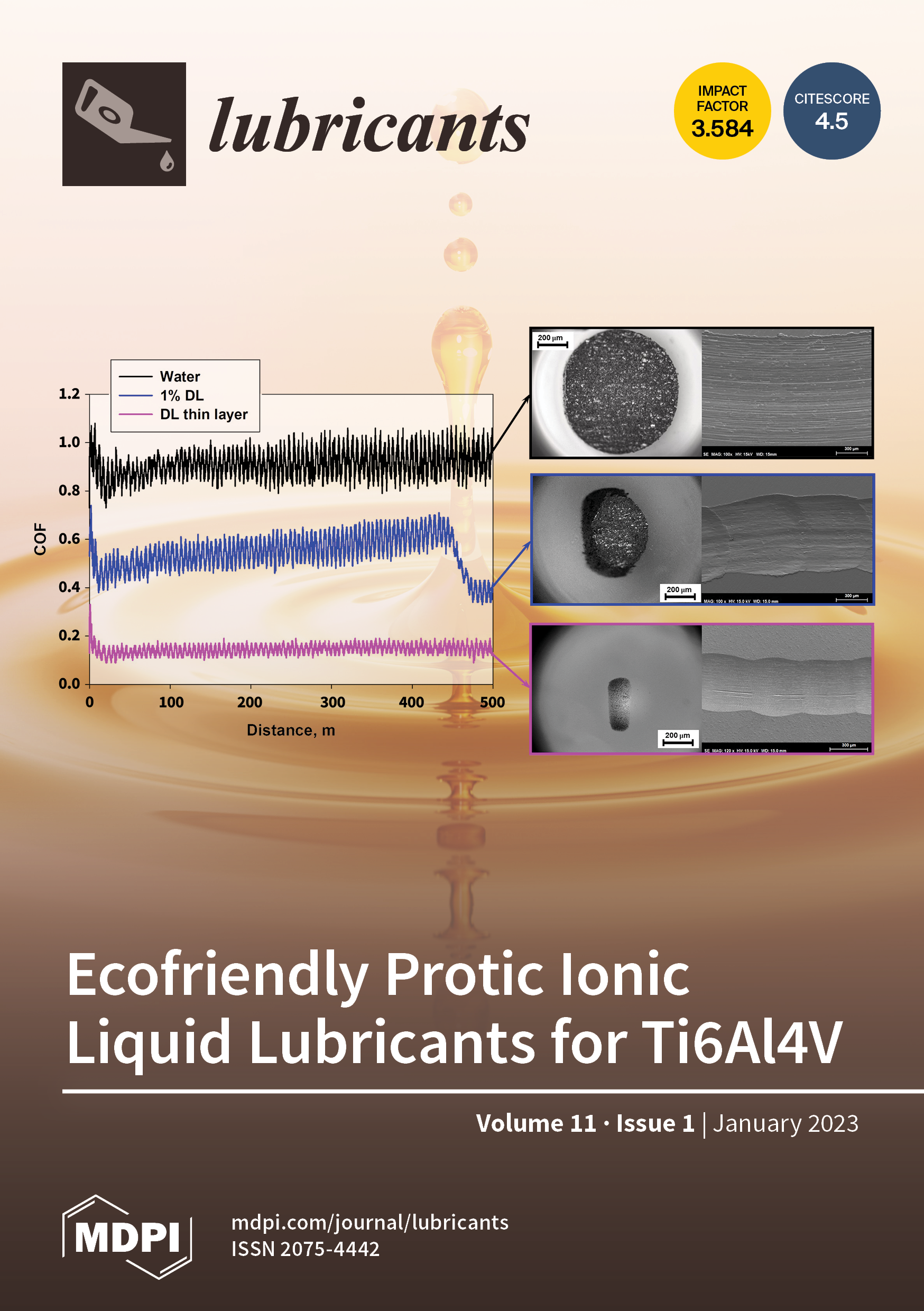
Skrzypek, Magdalena; Wojciechowski, Łukasz; Kałużny, Jarosław; Boncel, Sławomir; Marek, Adam A.; Runka, Tomasz; Nowicki, Marek; Jędrysiak, Rafał; Ruczka, Szymon; Błaszkiewicz, Paulina
Carbon Nanotubes Decorated with Nickel or Copper as Anti-Wear and Extreme-Pressure Additives for Greases Journal Article
In: Lubricants, vol. 12, pp. 448, 2024.
@article{Lubricants2024,
title = {Carbon Nanotubes Decorated with Nickel or Copper as Anti-Wear and Extreme-Pressure Additives for Greases},
author = {Magdalena Skrzypek and Łukasz Wojciechowski and Jarosław Kałużny and Sławomir Boncel and Adam A. Marek and Tomasz Runka and Marek Nowicki and Rafał Jędrysiak and Szymon Ruczka and Paulina Błaszkiewicz},
doi = {10.3390/lubricants12120448},
year = {2024},
date = {2024-12-16},
journal = {Lubricants},
volume = {12},
pages = {448},
abstract = {To increase the anti-wear (AW) and anti-scuffing possibilities of commercially available lithium grease, this paper proposed enriching the original composition with functionalised carbon nanotubes (CNTs) at a concentration of 0.1% (w/w). The CNTs were modified by decorating them with nanoparticles of two metals with established tribological potential: copper and nickel. The AW and extreme-pressure properties were determined using the customised ISO-20623 test on a four-ball apparatus. The AW properties were determined using the standardised parameter MWSD (mean wear scar diameter) and the anti-scuffing properties using the last non-seizing load. The greases enriched with nanoadditives showed better AWproperties compared to the reference grease at higher loads (1–1.2 kN). Particularly favourable results were observed for grease with the addition of Cudecorated CNTs, for which the MWSD values were more than 50% lower than the reference. Optical microscopy, SEM and TEM microscopy with EDS analysis, and Raman spectroscopy were used to identify the wear mechanisms and characterise the role of nanoadditives in the lubrication process.},
keywords = {},
pubstate = {published},
tppubtype = {article}
}
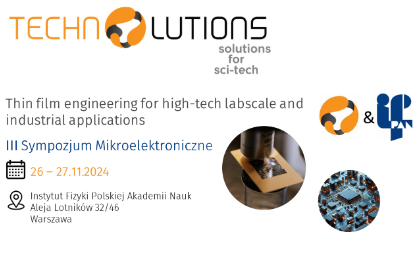
Kałuziak, Piotr; Raczyński, Jan; El-Ahmar, Semir; Koczorowski, Wojciech
Study of InSb Thin Films obtained by imperfect method for nearly perfect applications Conference
Technolutions 2024, Warsaw, November 26-27, 2024, (Poster presentation).
@conference{Technol2024_PK,
title = {Study of InSb Thin Films obtained by imperfect method for nearly perfect applications},
author = {Piotr Kałuziak and Jan Raczyński and Semir El-Ahmar and Wojciech Koczorowski},
url = {https://nano.put.poznan.pl/wp-content/uploads/2024/12/Technolutions2024_PK.pdf},
year = {2024},
date = {2024-11-26},
booktitle = {Technolutions 2024},
address = {Warsaw, November 26-27},
abstract = {Indium antimonide InSb is a III V group crystalline semiconductor with a room temperature energy gap of 0,18 eV a high electron mobility of 78 000 cm²/Vs hole mobility of 850 cm²/Vs which is crucial for efficient electronic devices This increased mobility leads to faster response times in infrared ( photodetectors, improving sensitivity and operational speed. InSb thin films can be grown on gallium arsenide substrates using Molecular Beam Epitaxy (MBE). MBE enhances film quality through precise deposition control, including environmental regulation, atomic layer deposition, flux monitoring, temperature control and the use of intermediate layers. Lately the MBE method was improved, which his resulted in more homogeneous InSb films In these studies, it was decided to use the less perfect Flash Evaporation Method (FEM). FEM does not fabricate layers of such good quality as MBE, but it is a cheaper and less demanding method, and what is more, the resulting layer imperfections may have potential applications in cybersecurity as physical unclonable functions(PUF). The studies presented here lead to the determination of the measurability and usability of fabrication defects in future plans to use them as cybersecurity elements.
Funding from the Ministry of Education and Science (Poland), Project No. 0512/SBAD/2420 and 0512/SBAD/6217
Funding from the National Centre for Research and Development (Poland), Project “MAGSET” No. LIDER/8/0021/L- 11/19/NCBR/2020},
note = {Poster presentation},
keywords = {},
pubstate = {published},
tppubtype = {conference}
}
Funding from the Ministry of Education and Science (Poland), Project No. 0512/SBAD/2420 and 0512/SBAD/6217
Funding from the National Centre for Research and Development (Poland), Project “MAGSET” No. LIDER/8/0021/L- 11/19/NCBR/2020
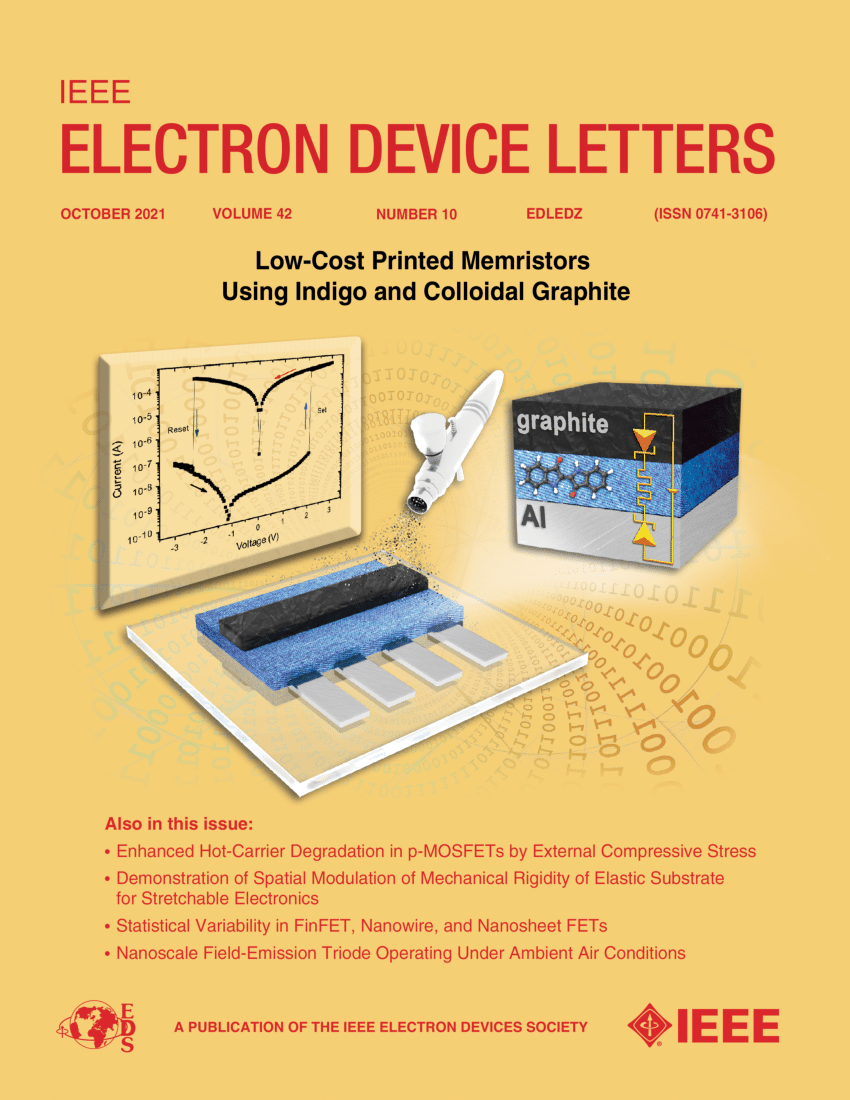
Ciuk, Tymoteusz; Nouvellon, Corinne; Monteverde, Fabien; Stańczyk, Beata; Przyborowska, Krystyna; Czołak, Dariusz; El-Ahmar, Semir
High-temperature Thermal Stability of a Graphene Hall Effect Sensor on Defect-engineered 4H-SiC(0001) Journal Article
In: IEEE Electron Device Letters, vol. 45, no. 10, pp. 1957-1960, 2024.
@article{EDL2024,
title = {High-temperature Thermal Stability of a Graphene Hall Effect Sensor on Defect-engineered 4H-SiC(0001)},
author = {Tymoteusz Ciuk and Corinne Nouvellon and Fabien Monteverde and Beata Stańczyk and Krystyna Przyborowska and Dariusz Czołak and Semir El-Ahmar},
doi = {10.1109/LED.2024.3436050},
year = {2024},
date = {2024-09-30},
urldate = {2024-09-30},
journal = {IEEE Electron Device Letters},
volume = {45},
number = {10},
pages = {1957-1960},
abstract = {In this letter, we demonstrate a Hall effect sensor in the technology of amorphous-Al 2 O 3 -passivated transfer-free p-type hydrogen-intercalated quasi-free-standing epitaxial Chemical Vapor Deposition graphene on semi-insulating high-purity on-axis 4H-SiC(0001), pre-epitaxially modified with 5-keV hydrogen (H + ) ions. The sensor operates between 305 K and 770 K, with a current-mode sensitivity of ~75 V/AT and thermal stability below 0.15 %/K (⩽ 0.03 %/K in a narrower range between 305 K and 700 K). It is a promising two-dimensional platform for high-temperature magnetic diagnostics and plasma control systems for modern tokamak fusion reactors.
Funding from the Ministry of Education and Science (Poland), Project No. 0512/SBAD/2420},
keywords = {},
pubstate = {published},
tppubtype = {article}
}
Funding from the Ministry of Education and Science (Poland), Project No. 0512/SBAD/2420

Kwiecień, Katarzyna; Raczyński, Jan; Puchalska, Agnieszka; Nowak, Ewelina; Chłopocka, Edyta; Kot, Damian; Szybowicz, Mirosław; Jurczyszyn, Leszek; Koczorowski, Wojciech
The effects of short-term air exposure of monocrystal HfSe2 surface Conference
IWSP, Niemcza, September 22-26, 2024, (Oral presentation).
@conference{IWSP2024_KK,
title = {The effects of short-term air exposure of monocrystal HfSe2 surface},
author = {Katarzyna Kwiecień and Jan Raczyński and Agnieszka Puchalska and Ewelina Nowak and Edyta Chłopocka and Damian Kot and Mirosław Szybowicz and Leszek Jurczyszyn and Wojciech Koczorowski},
url = {https://nano.put.poznan.pl/wp-content/uploads/2024/09/IWSP2024_KK.pdf},
year = {2024},
date = {2024-09-23},
booktitle = {IWSP},
address = {Niemcza, September 22-26},
abstract = {One of the ways to improve silicon-based electronics is the integration of silicon with a material that possesses properties such as a sizable band gap (Eg) in the range of 1 - 2 eV and high room temperature carrier mobility (RTCM). HfSe2, which belongs to transition metal dichalcogenides (TMDs) group, is a material that meets these requirements. Predicted RTCM of HfSe2 is the highest among TMDs (3500 cm2 V-1 s-1). Its bulk Eg is 1.1 eV and depends on the number of its layers and on the presence of HfO2 in its subsurface, which widens the Eg up to 2 eV. Due to the sensitivity of HfSe2 to oxidation and its technological importance in possible future applications, we investigated this process for exfoliated bulk HfSe2 crystal under ambient conditions. Our scanning electron microscopy studies show early oxidation with a rapid increase in the Se-rich blister coverage. X-ray photoemission data reveals diffusion of O atoms into the bulk and HfO2 formation. Raman spectroscopy results confirm the coexistence of HfSe2 and HfO2 on the surface. Additionally, we confront the experimental findings with the density functional theory predictions.
Funding from the Ministry of Education and Science (Poland), Project No. 0512/SBAD/2420 and 0612/SBAD/6215},
note = {Oral presentation},
keywords = {},
pubstate = {published},
tppubtype = {conference}
}
Funding from the Ministry of Education and Science (Poland), Project No. 0512/SBAD/2420 and 0612/SBAD/6215

Raczyński, Jan; Koczorowski, Wojciech
Comparison of different metal/PtSe2 systems Conference
IWSP, Niemcza, September 22-26, 2024, (Oral presentation).
@conference{IWSP2024_JR,
title = {Comparison of different metal/PtSe2 systems},
author = {Jan Raczyński and Wojciech Koczorowski},
url = {https://nano.put.poznan.pl/wp-content/uploads/2024/09/IWSP2024_JR.pdf},
year = {2024},
date = {2024-09-23},
urldate = {2024-09-23},
booktitle = {IWSP},
address = {Niemcza, September 22-26},
abstract = {Today, 2D materials also include Transition Metal Dichalcogenides (TMD), which provide a wide range of charge carrier mobility values and bandgap energy, which depend on the thickness. One of the most promising TMD materials for further applications is PtSe2, which exhibits a chemically nonreactive surface, it is crucial to determine the properties of the metal/PtSe2 interfaces. Different metals form morphologically unique structures on the PtSe2 surface, which requires a comprehensive analysis of physicochemical properties including an analysis of the thermal stability of such systems. This presentation will discuss the properties of the metallic layers (eg. Ni, Ti) with various thicknesses embedded on the surface of the bulk PtSe2 crystal. Particular emphasis will be placed on forming intermixed phases at the interface observed in the form of vibration modes in Raman spectroscopy and the chemical shift in XPS measurements. The observed differences between the metal layer and PtSe2 indicate the distinctive properties of such structures, which translate into the operation of planar architecture sensor devices.
Funding from the Ministry of Education and Science (Poland), Project No. 0512/SBAD/2320
Funding from the National Science Centre (Poland), Project No. 2019/35/O/ST5/01940, NAWA grant No.PPN/STA/2021/1/00043},
note = {Oral presentation},
keywords = {},
pubstate = {published},
tppubtype = {conference}
}
Funding from the Ministry of Education and Science (Poland), Project No. 0512/SBAD/2320
Funding from the National Science Centre (Poland), Project No. 2019/35/O/ST5/01940, NAWA grant No.PPN/STA/2021/1/00043

Koczorowski, Wojciech; Raczyński, Jan
Comparative investigation of PtSe2-based systems from 1L to bulk Conference
IWSP, Niemcza, September 22-26, 2024, (Oral presentation).
@conference{IWSP2024_WK,
title = {Comparative investigation of PtSe2-based systems from 1L to bulk},
author = {Wojciech Koczorowski and Jan Raczyński},
url = {https://nano.put.poznan.pl/wp-content/uploads/2024/09/IWSP2024_WK.pdf},
year = {2024},
date = {2024-09-23},
booktitle = {IWSP},
address = {Niemcza, September 22-26},
abstract = {The Transition Metal Dichalcogenides (TMD) class of materials attracts the interest of researchers and technologists because of their intrinsic physical properties, such as the thickness dependence of electronic properties that switch from semiconducting to metallic in the same material and the possibility of bandgap engineering. PtSe2 is a promising material with potential for future applications due to the chemical stability of the surface and the predicted high charge carrier mobility. In the presentation experimental studies of 1, 2, 3, 5, and 10 L of PtSe2 deposited on an Al2O3 substrate will be shown, including a comparison with the bulk properties. The discussion will focus on the properties of commercially available samples and the impact of temperature on the considered systems (in the range of RT to 520K). Finally, the fabrication of elaborate procedures for the PtSe2-based simple electronic devices will be discussed.
Funding from the Ministry of Education and Science (Poland), Project No. 0512/SBAD/2420
Funding from the National Science Centre (Poland), Project No. 2019/35/O/ST5/01940},
note = {Oral presentation},
keywords = {},
pubstate = {published},
tppubtype = {conference}
}
Funding from the Ministry of Education and Science (Poland), Project No. 0512/SBAD/2420
Funding from the National Science Centre (Poland), Project No. 2019/35/O/ST5/01940

Koczorowski, Wojciech; Raczyński, Jan; Kwiecień, Katarzyna; Czajka, Ryszard
Charakteryzacja wybranych materiałów TMD zawierających Se Conference
XIII Konferencja Techniki Próżni, Warsaw, September 19-20, 2024, (Invited lecture).
@conference{PTP2024_WK,
title = {Charakteryzacja wybranych materiałów TMD zawierających Se},
author = {Wojciech Koczorowski and Jan Raczyński and Katarzyna Kwiecień and Ryszard Czajka},
url = {https://nano.put.poznan.pl/wp-content/uploads/2024/09/XIIIKTP-WK.pdf},
year = {2024},
date = {2024-09-20},
urldate = {2024-09-20},
booktitle = {XIII Konferencja Techniki Próżni},
address = {Warsaw, September 19-20},
abstract = {Dichalkogenki metali przejściowych (TMD) to grupa materiałów dwuwymiarowych, które posiadają ciekawe właściwości fizyczne. Wykazują one silną zależność właściwości elektronowych w funkcji ilości ultra-cienkich warstw (od jednej do kilku ML). Pozwala to uzyskać zarówno charakterystykę półprzewodnikową jak i metaliczną dla tego samego materiału. Powoduje to, że materiały TMD podlegają intensywnym badaniom naukowym. W ramach prezentacji pokazane zostaną wyniki prac eksperymentalnych dotyczących PtSe2 oraz HfSe2, które cechują się dużą wartością ruchliwości nośników ładunków elektrycznych. Istotną cechą różnicującą te materiały jest ich aktywność chemiczna, która jest znacznie większa w przypadku HfSe2. W przypadku PtSe2 główny nacisk postawiony zostanie na analizie widm spektroskopii Ramana (RS) umożliwiającej jednoznaczne określenie ilości ML w układzie. Dla powierzchni kryształu HfSe2 omówione zostaną komplementarne wyniki uzyskane za pomocą technik: skaningowej mikroskopii elektronowej (SEM), rentgenowskiej spektrometrii fotoelektronów (XPS) i RS prezentujące zmiany morfologii warstw przypowierzchniowych, które są efektem ekspozycji na warunki zewnętrzne oraz umożliwiają zrozumienie dynamiki procesu utleniania powierzchni. W końcowej części zaprezentowana zostanie także metoda strukturyzacji prostych urządzeń elektronowych z wykorzystaniem: litografii optycznej, strukturyzowania plazmą argonową oraz osadzania warstw metalicznych z wykorzystaniem osadzania magnetronowego.
Funding from the Ministry of Education and Science (Poland), Project No. 0512/SBAD/2420
Funding from the National Science Center (Poland), Project No. 2019/35/O/ST5/01940},
note = {Invited lecture},
keywords = {},
pubstate = {published},
tppubtype = {conference}
}
Funding from the Ministry of Education and Science (Poland), Project No. 0512/SBAD/2420
Funding from the National Science Center (Poland), Project No. 2019/35/O/ST5/01940

El-Ahmar, Semir; Reddig, Wiktoria; Jagiełło, Jakub; Szary, Maciej J.; Dobrowolski, Artur; Prokopowicz, Rafał; Ziemba, Maciej; Wzorek, Marek; Ciuk, Tymoteusz
Graphene & 2D Mat. 9, Poznan, September 8-10, 2024, (Invited lecture).
@conference{GR2DMAT9_SA,
title = {Exploring the limits of graphene's operation in extreme conditions imposed by the future energy industry},
author = {Semir El-Ahmar and Wiktoria Reddig and Jakub Jagiełło and Maciej J. Szary and Artur Dobrowolski and Rafał Prokopowicz and Maciej Ziemba and Marek Wzorek and Tymoteusz Ciuk},
url = {https://nano.put.poznan.pl/wp-content/uploads/2024/09/GR2DMat9_SA.pdf},
year = {2024},
date = {2024-09-10},
booktitle = {Graphene & 2D Mat. 9},
address = {Poznan, September 8-10},
abstract = {Our research explores the potential of using two-dimensional (2D) carbon structures as magnetic field detectors capable of operating in the extreme conditions of future thermonuclear power plants. In so-called magnetic-confinement fusion reactors, electronics will be exposed to high temperatures and radiation damage. We demonstrate the experimental study on the impact of neutron radiation and determine its influence on the electrical parameters of epitaxial graphene-based systems. We have conducted preliminary research to investigate the impact of high temperature and neutron irradiation separately. For this purpose, we fabricated a hydrogen-intercalated quasi-free-standing (QFS) graphene on semi-insulating 4H-SiC(0001) and 6H-SiC(0001), passivated with an Al2O3 layer [3,4]. The systems were exposed to highenergy neutron fluxes using the MARIA research nuclear reactor. We theorize that the main factor affecting the QFS properties of graphene in tested systems is the depletion of atoms in the hydrogen layer, based on Hall effect measurements and micro-Raman characterization supported by high-resolution transmission electron microscopy. We have predicted, using density functional theory calculations, that damage to the intercalation lowers carrier concentration in graphene. We anticipate that temperatures above 200°C will facilitate the diffusion of the hydrogen atoms from parts with higher to lower concentrations. This effect can reduce the surface area where intercalation is too low to support the separation of the graphene and improve its QFS properties.
Understanding the mechanism of damaging the tested systems by neutron radiation is a key milestone in assessing its suitability for magnetic field detection in harsh environments.
Funding from the Ministry of Education and Science (Poland), Project No. 0512/SBAD/2420},
note = {Invited lecture},
keywords = {},
pubstate = {published},
tppubtype = {conference}
}
Understanding the mechanism of damaging the tested systems by neutron radiation is a key milestone in assessing its suitability for magnetic field detection in harsh environments.
Funding from the Ministry of Education and Science (Poland), Project No. 0512/SBAD/2420
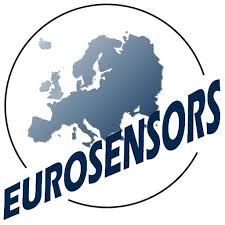
El-Ahmar, Semir; Jankowski, Jakub; Czaja, Paweł; Reddig, Wiktoria; Przychodnia, Marta; Raczyński, Jan; Koczorowski, Wojciech
Hall-effect sensors for extreme temperature applications Conference
XXXVI EUROSENSORS conference, Debrecen, September 1-4, 2024, (Oral presentation).
@conference{EUROSENSORS_2024_SA,
title = {Hall-effect sensors for extreme temperature applications},
author = {Semir El-Ahmar and Jakub Jankowski and Paweł Czaja and Wiktoria Reddig and Marta Przychodnia and Jan Raczyński and Wojciech Koczorowski},
url = {https://nano.put.poznan.pl/wp-content/uploads/2024/09/EuroSensors2024_SA.pdf},
year = {2024},
date = {2024-09-02},
booktitle = {XXXVI EUROSENSORS conference},
address = {Debrecen, September 1-4},
abstract = {This work is focused on developing magnetic field sensors that rely on the Hall effect and can operate stably in extreme temperatures. We have achieved this by creating a Hall effect structure using indium antimonide and a housing that can withstand an extremely wide range of operating temperatures. Our device has been tested and proven to operate stably at high temperatures up to 350°C, as well as in the cryogenic range using liquid helium. This is a significant milestone as no other magnetic field sensor has been able to perform in such extreme temperature conditions.
Funding from the Ministry of Education and Science (Poland), Project No. 0512/SBAD/2420
Funding from the National Centre for Research and Development (Poland), Project “MAGSET” No. LIDER/8/0021/L- 11/19/NCBR/2020},
note = {Oral presentation},
keywords = {},
pubstate = {published},
tppubtype = {conference}
}
Funding from the Ministry of Education and Science (Poland), Project No. 0512/SBAD/2420
Funding from the National Centre for Research and Development (Poland), Project “MAGSET” No. LIDER/8/0021/L- 11/19/NCBR/2020

Reddig, Wiktoria; El-Ahmar, Semir; Prokopowicz, Rafał; Ciuk, Tymoteusz
Neutron Radiation Effects on Thin-Film and Two-Dimensional Magnetic Field Sensors Conference
XXXVI EUROSENSORS conference, Debrecen, September 1-4, 2024, (Oral presentation).
@conference{EUROSENSORS_2024_WR,
title = {Neutron Radiation Effects on Thin-Film and Two-Dimensional Magnetic Field Sensors},
author = {Wiktoria Reddig and Semir El-Ahmar and Rafał Prokopowicz and Tymoteusz Ciuk},
url = {https://nano.put.poznan.pl/wp-content/uploads/2024/09/EuroSensors2024_WR.pdf},
year = {2024},
date = {2024-09-02},
booktitle = {XXXVI EUROSENSORS conference},
address = {Debrecen, September 1-4},
abstract = {Reporting research findings on two types of magnetic field sensors for use in harsh environments and the impact of high-energy neutron flux on them. Researched sensors being 2-D epitaxially grown quasi- free-standing graphene on SiC and thin film InSb on GaAs. The research constitutes a continuation of the series of studies assessing the radiation resistance of graphene-based sensor platforms compared to classical thin-film magnetic diagnostic systems.
Funding from the Ministry of Education and Science (Poland), Project No. 0512/SBAD/2420
Funding from the National Centre for Research and Development (Poland), Project “MAGSET” No. LIDER/8/0021/L- 11/19/NCBR/2020},
note = {Oral presentation},
keywords = {},
pubstate = {published},
tppubtype = {conference}
}
Funding from the Ministry of Education and Science (Poland), Project No. 0512/SBAD/2420
Funding from the National Centre for Research and Development (Poland), Project “MAGSET” No. LIDER/8/0021/L- 11/19/NCBR/2020
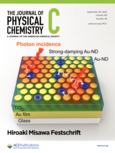
Zhezhera, Taras; Głuchowski, Paweł; Nowicki, Marek; Chrunik, Maciej; Szczęśniak, Barbara; Kasprowicz, Dobrosława
Enhancement of Yb3+ Emission in Bi3TeBO9 through Efficient Energy Transfer from Bi3+ Ions Journal Article
In: The Journal of Physical Chemistry C, vol. 128, iss. 34, pp. 14357, 2024.
@article{JphysChemC2024,
title = {Enhancement of Yb3+ Emission in Bi3TeBO9 through Efficient Energy Transfer from Bi3+ Ions},
author = {Taras Zhezhera and Paweł Głuchowski and Marek Nowicki and Maciej Chrunik and Barbara Szczęśniak and Dobrosława Kasprowicz},
doi = {10.1021/acs.jpcc.4c04134},
year = {2024},
date = {2024-08-15},
journal = {The Journal of Physical Chemistry C},
volume = {128},
issue = {34},
pages = {14357},
abstract = {An efficient near-infrared emission of Yb3+ ions sensitized by Bi3+ ions was revealed in Bi3TeBO9:Yb3+ microcrystalline powders. Bi3TeBO9:Yb3+ doped with different concentrations of Yb3+ ions (0.5, 1.0, 2.5, 4.0, and 7.5 at %) were synthesized by means of the modified Pechini method. The structure, morphology, and elemental composition of samples were investigated using X-ray diffraction, scanning electron microscopy, and energy-dispersive X-ray spectroscopy techniques. The μ-Raman spectroscopic measurements of Bi3TeBO9:Yb3+ allowed us to determine the energy vibrations of characteristic molecular groups BO3 and TeO6 present in the Bi3TeBO9 matrix. Emissions of Bi3TeBO9:Yb3+ powders were measured upon excitation at 330 nm by Bi3+ ions (the 1S0 → 3P1 transition) in VIS (Bi3+ ions emission assigned to the 3P0 → 1S0 transition) and NIR (Yb3+ ions emission assigned to the 2F5/2 → 2F7/2) spectral ranges. In particular, the strongest emission band of Yb3+ ions at 975 nm was observed in the spectrum of Bi3TeBO9:Yb3+ doped with 4.0 at % of Yb3+ ions. This suggests that Bi3+ ions present in the Bi3TeBO9 matrix can be used as a UV absorption sensitizer for Yb3+ ions in the considered systems. Moreover, the decay times of 3P0 → 1S0 transitions of Bi3+ ions (emission in VIS with maximum at 550 nm) and 2F5/2 → 2F7/2 transitions of Yb3+ ions (emission in NIR at 975 nm) upon excitation at 330 nm were measured. The calculated energy transfer efficiency and quantum efficiency coefficients confirmed the effective energy transfer from Bi3+ to Yb3+ ions in the Bi3TeBO9:Yb3+ system. The obtained results show that Bi3TeBO9:Yb3+ powders, as efficient UV to NIR spectral converters, can be potentially used in c-Si solar cell technology, enhancing the photovoltaic effect.},
keywords = {},
pubstate = {published},
tppubtype = {article}
}
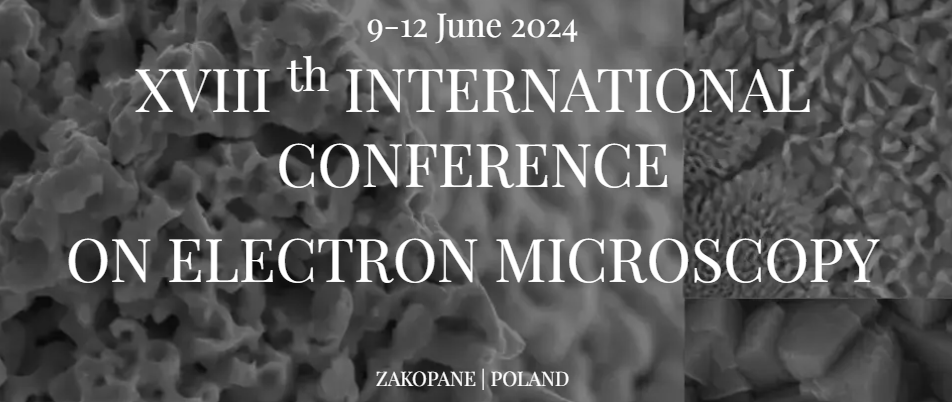
Nowicki, Marek
SEM observations for biology and medicine without special sample preparation Conference
XVIII International Conference on Electron Microscopy, Zakopane, June 9-12 , 2024, (Poster presentation).
@conference{ICEM2024_MN,
title = {SEM observations for biology and medicine without special sample preparation},
author = {Marek Nowicki},
url = {https://nano.put.poznan.pl/wp-content/uploads/2024/10/ICEM2024_MN.pdf},
year = {2024},
date = {2024-07-10},
booktitle = {XVIII International Conference on Electron Microscopy},
address = {Zakopane, June 9-12 },
abstract = {The presentation will show and discuss SEM images of living objects. All observations were made without special sample preparation (e.g. critical point drying, carbon coating). It was crucial to perform measurements in a very short time after placing the objects in a low vacuum.
The following will be presented: an analysis of the structure of eriophyoidea (dimensions) for a better understanding of their biology, an analysis of the central catheters of patients with bacterial and fungal infections, and an analysis of the dissolution of foliar fertilizer used in plant cultivation.
In each of these cases, a scanning electron microscope operating in a low vacuum was a sufficient tool to obtain valuable results.
Funding from the Ministry of Education and Science (Poland), Project No. 0512/SBAD/2320},
note = {Poster presentation},
keywords = {},
pubstate = {published},
tppubtype = {conference}
}
The following will be presented: an analysis of the structure of eriophyoidea (dimensions) for a better understanding of their biology, an analysis of the central catheters of patients with bacterial and fungal infections, and an analysis of the dissolution of foliar fertilizer used in plant cultivation.
In each of these cases, a scanning electron microscope operating in a low vacuum was a sufficient tool to obtain valuable results.
Funding from the Ministry of Education and Science (Poland), Project No. 0512/SBAD/2320

El-Ahmar, Semir; Jankowski, Jakub; Czaja, Paweł; Reddig, Wiktoria; Przychodnia, Marta; Raczyński, Jan; Koczorowski, Wojciech
Magnetic Diagnostics in Extreme Temperature Conditions Conference
14th European Magnetic Sensors and Actuators Conference (EMSA), Kosice, June 24-27, 2024, (Oral presentation).
@conference{EMSA2024_SA,
title = {Magnetic Diagnostics in Extreme Temperature Conditions},
author = {Semir El-Ahmar and Jakub Jankowski and Paweł Czaja and Wiktoria Reddig and Marta Przychodnia and Jan Raczyński and Wojciech Koczorowski},
url = {https://nano.put.poznan.pl/wp-content/uploads/2024/07/EMSA2024_SA.pdf},
year = {2024},
date = {2024-06-26},
urldate = {2024-06-26},
booktitle = {14th European Magnetic Sensors and Actuators Conference (EMSA)},
address = {Kosice, June 24-27},
abstract = {Magnetic field detection devices are highly valuable in many industries, thanks to the fact that they can measure various quantities such as position, movement, direction, and rotational speed. Nowadays, there is a high demand for electronics that canfunction reliably in harsh environments, including those that can withstand extreme temperatures. Traditional electronics design often requiresactive or passive cooling, but thismay not always be practical or effective. Hence, there is an increasing need for extremeenvironment electronics, particularly in the automotive,space, defense, and energy indus-tries. Our latest reports on semiconductor-based Hall sensors operating in extreme conditions are limited to the temperature range from liquid nitrogen (LN) up to 350C. Research on alternative solutions based on monolayer graphene, in turn, presents tests inthe LN - 500C range in a magnetic field below 1 T. Our research exploresthe potentialof utilizing classic semiconductor thin-film material (donor-doped indium antimonide) asan active layer for a Hall effect sensor that can measure magnetic fields in extreme temperature range from liquid helium (LHe) temperatures up to 350C. We verify the usability, thermal stability of our device, and the linearity of its signal in the magnetic field rangeabove 1T. We also propose a solution to the problem of the sensor package suitable for an extremely wide range of work. We present a full-fledged magnetic field sensor that canmeet industrial requirements, being manufactured using almost exclusively the academic infrastructure of the Poznan University of Technology. Ourfinding is a step forward in thedevelopment of magnetic diagnostic devices capable of operating in a broadly defined extreme environments.
Funding from the Ministry of Education and Science (Poland), Project No. 0512/SBAD/2420
Funding from the National Centre for Research and Development (Poland), Project “MAGSET” No. LIDER/8/0021/L- 11/19/NCBR/2020},
note = {Oral presentation},
keywords = {},
pubstate = {published},
tppubtype = {conference}
}
Funding from the Ministry of Education and Science (Poland), Project No. 0512/SBAD/2420
Funding from the National Centre for Research and Development (Poland), Project “MAGSET” No. LIDER/8/0021/L- 11/19/NCBR/2020

Reddig, Wiktoria; El-Ahmar, Semir; Ciuk, Tymoteusz; Prokopowicz, Rafał
Investigating Neutron Radiation Induced Damage on Novel Type of Hall-Effect Sensors Conference
14th European Magnetic Sensors and Actuators Conference (EMSA), Kosice, June 24-27, 2024, (Oral presentation).
@conference{EMSA2024_WR,
title = {Investigating Neutron Radiation Induced Damage on Novel Type of Hall-Effect Sensors},
author = {Wiktoria Reddig and Semir El-Ahmar and Tymoteusz Ciuk and Rafał Prokopowicz},
url = {https://nano.put.poznan.pl/wp-content/uploads/2024/07/EMSA2024_WR.pdf},
year = {2024},
date = {2024-06-25},
urldate = {2024-06-25},
booktitle = {14th European Magnetic Sensors and Actuators Conference (EMSA)},
journal = {European Magnetic Sensors and Actuators Conference (EMSA 2024)},
address = {Kosice, June 24-27},
abstract = {Our research exploresthe potential use of semiconductor thin-film materials andgraphene-based structures for magnetic field detection in harsh environments, par-ticularly in thermonuclear reactors. We have conducted preliminary research to investi-gatetheimpactofhightemperature and neutron irradiation on the electrical prop-erties of these sensors. Our studies involved a 2D material made from hydrogen-intercala-ted quasi-free-standing graphene on semi-insulating 4H-SiC (0001), passivated with anAl2O3layer, and a donor-doped InSb-based thin-film on a semi-insulating GaAs sub-strate. Our research has shown how described systems were affected by fast neutron fluence of 7×10^17cm^(−2) using MARIA research nuclear reactor. Based on Hall effect measurements and micro-Raman analysis, we conjecture that for graphene-based structurea ter irradiation, the primary factor impacting the electrical characteristics is the depletion of atoms in the hydrogen layer. This phenomenon is expected to decrease the surfacearea of intercalation which becomes too scarce to support graphene separation. However, we observe self-healing abilities at temperatures higher than 200C. To determine if these materials are suitable for magnetic field sensing in thermonuclear reactors, we need to understand how they will be affected by stronger neutron radiation. Therefore, we investigate new modes of damage in 5 times greater neutron fluence (40×10^17cm^(−2)) and how the effects of neutron irradiation differ when the graphene-based sensor’s substrate polytype is changed to 6H-SiC (0001).
Funding from the Ministry of Education and Science (Poland), Project No. 0512/SBAD/2420
Funding from the National Centre for Research and Development (Poland), Project “MAGSET” No. LIDER/8/0021/L- 11/19/NCBR/2020},
note = {Oral presentation},
keywords = {},
pubstate = {published},
tppubtype = {conference}
}
Funding from the Ministry of Education and Science (Poland), Project No. 0512/SBAD/2420
Funding from the National Centre for Research and Development (Poland), Project “MAGSET” No. LIDER/8/0021/L- 11/19/NCBR/2020
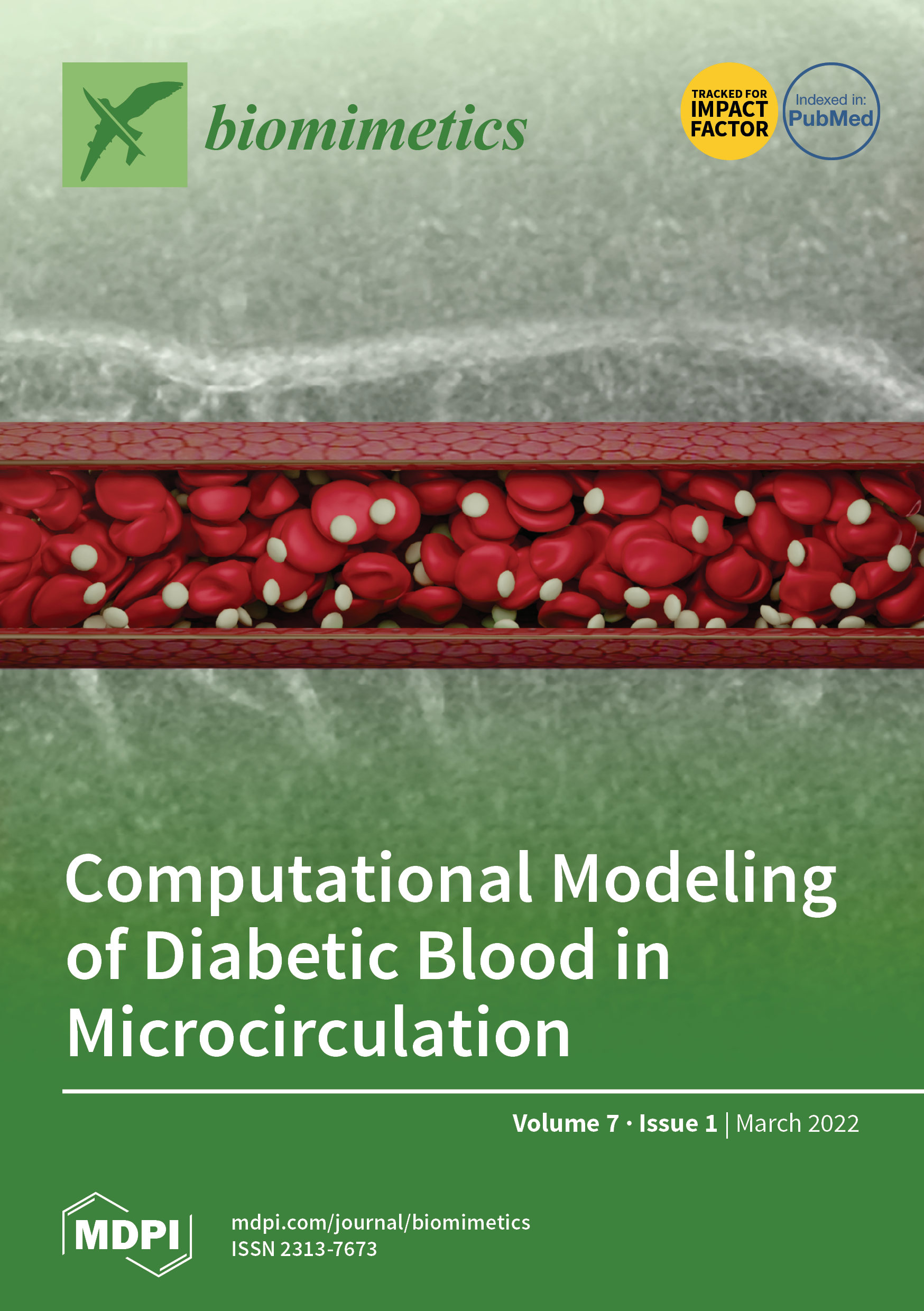
Nowacki, Krzysztof; Kubiak, Anita; Nowicki, Marek; Tsurkan, Dmitry; Ehrlich, Hermann; Jesionowski, Teofil
3D Spongin Scaffolds as Templates for Electro-Assisted Deposition of Selected Iron Oxides Journal Article
In: Biomimetics, vol. 9, iss. 7, pp. 387, 2024.
@article{Nowacki2024,
title = {3D Spongin Scaffolds as Templates for Electro-Assisted Deposition of Selected Iron Oxides},
author = {Krzysztof Nowacki and Anita Kubiak and Marek Nowicki and Dmitry Tsurkan and Hermann Ehrlich and Teofil Jesionowski},
doi = {10.3390/biomimetics9070387},
year = {2024},
date = {2024-06-25},
journal = {Biomimetics},
volume = {9},
issue = {7},
pages = {387},
abstract = {The skeletons of marine sponges are ancient biocomposite structures in which mineral phases are formed on 3D organic matrices. In addition to calcium- and silicate-containing biominerals, iron ions play an active role in skeleton formation in some species of bath sponges in the marine environment, which is a result of the biocorrosion of the metal structures on which these sponges settle. The interaction between iron ions and biopolymer spongin has motivated the development of selected extreme biomimetics approaches with the aim of creating new functional composites to use in environmental remediation and as adsorbents for heavy metals. In this study, for the first time, microporous 3D spongin scaffolds isolated from the cultivated marine bath sponge Hippospongia communis were used for electro-assisted deposition of iron oxides such as goethite [α-FeO(OH)] and lepidocrocite [γ-FeO(OH)]. The obtained iron oxide phases were characterized with the use of scanning electron microscopy, FTIR, and X-ray diffraction. In addition, mechanisms of electroassisted deposition of iron oxides on the surface of spongin, as a sustainable biomaterial, are proposed and discussed.
Funding from the Ministry of Education and Science (Poland), Project No. 0911/SBAD/2402 and 0912/SBAD/2406},
keywords = {},
pubstate = {published},
tppubtype = {article}
}
Funding from the Ministry of Education and Science (Poland), Project No. 0911/SBAD/2402 and 0912/SBAD/2406
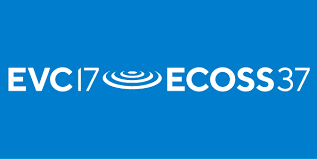
Kałuziak, Piotr; Raczyński, Jan; El-Ahmar, Semir; Koczorowski, Wojciech
Fabrication of Thin-layer InSb-based Planar Devices Conference
The European Conference on Surface Science - ECOSS 37 , Harrogate, June 17-21, 2024, (Oral presentation).
@conference{ECOSS37_PK,
title = {Fabrication of Thin-layer InSb-based Planar Devices},
author = {Piotr Kałuziak and Jan Raczyński and Semir El-Ahmar and Wojciech Koczorowski},
url = {https://nano.put.poznan.pl/wp-content/uploads/2024/07/ECOSS37_PK.pdf},
year = {2024},
date = {2024-06-18},
urldate = {2024-06-18},
booktitle = {The European Conference on Surface Science - ECOSS 37 },
address = {Harrogate, June 17-21},
abstract = {For many decades, indium antimonide (InSb) has been a well-studied material that is highly valued for its low energy gap of approximately 0.18 eV at room temperature, as well as its exceptional electric charge carriers mobility value, which stands at 77000 cm2/(V·s). The development of device fabrication technologies opens new possibilities for InSb thin layers. The lithography process application followed by metals deposition under vacuum conditions to the graphene layer makes it possible to fabricate sophisticated planar architectures with unique useability. A slight modification of such structuring procedure allows the transfer of the technology to layers of greater thickness, e.g. InSb. High-quality InSb thin films are fabricated using the flash evaporation technique under HV conditions on a gallium arsenide (GaAs) substrate. Following the modified structurisation procedure the Hall and TLM structures were fabricated to determine the galvanometric properties of the InSb-based hybrid systems. In addition, the structure to test the efficacy of the strip magneto sensor (SMS) in the InSb was proposed. As a result of the high charge carrier mobility of InSb, it is predicted to obtain a significant magnetoresistive effect in specific geometry configurations.
Funding from the Ministry of Education and Science (Poland), Project No. 0512/SBAD/2420 and 0512/SBAD/6217
Funding from the National Centre for Research and Development (Poland), Project “MAGSET” No. LIDER/8/0021/L- 11/19/NCBR/2020},
note = {Oral presentation},
keywords = {},
pubstate = {published},
tppubtype = {conference}
}
Funding from the Ministry of Education and Science (Poland), Project No. 0512/SBAD/2420 and 0512/SBAD/6217
Funding from the National Centre for Research and Development (Poland), Project “MAGSET” No. LIDER/8/0021/L- 11/19/NCBR/2020

Raczyński, Jan; Nowaczyk, Jakub; Koczorowski, Wojciech
Thermal evolution of the metal/PtSe2 systems studied by Raman Spectroscopy Conference
The European Conference on Surface Science - ECOSS 37 , Harrogate, June 17-21, 2024, (Oral presentation).
@conference{ECOSS37_JR,
title = {Thermal evolution of the metal/PtSe2 systems studied by Raman Spectroscopy},
author = {Jan Raczyński and Jakub Nowaczyk and Wojciech Koczorowski},
url = {https://nano.put.poznan.pl/wp-content/uploads/2024/07/ECOSS37_JR.pdf},
year = {2024},
date = {2024-06-17},
urldate = {2024-06-17},
booktitle = {The European Conference on Surface Science - ECOSS 37 },
address = {Harrogate, June 17-21},
abstract = {The discovery of graphene and its physical properties started a new era in the investigating of thin layer materials. Today, these materials also include Transition Metal Dichalcogenides(TMD), which provide a wide range of physical properties, such as the values of charge carrier mobility and bandgap energy, which depend on the layer thickness. One of the most promising TMD materials is PtSe2 with predicted high charge carrier mobility at room temperature(RT). In that case, it is crucial to determine the physical properties of the thin layer as an active channel in the planar sensor device. To fully understand of the formed interface metal/PtSe2 interface, it is necessary to perform measurements to give insight in to the active channel and interface physical properties both at RT and during thermal treatment. In that case, one of the most crucial methodologies is Raman spectroscopy allow analyze of the characteristic mods’ position transform it into the change of the doping and stress level in the sample PtSe2. The properties of the active layer of PtSe2, especially the changes in the stress and doping type levels at RT and during elevated temperature(up to 473K) will be discussed in this presentation. Simultaneously emphasis will be placed on the properties of the metal(eg.Ti,Ni,Pt)/PtSe2 interfaces and the impact of the deposited metallic layer and thermal treatment on the PtSe2 bulk transformation. The application of the temperature dependent correlation plots allows the determination of the temperature range work of PtSe2 based system for a potential planar device will be presented and discussed.
Funding from the Ministry of Education and Science (Poland), Project No. 0512/SBAD/2420
Funding from the National Science Centre (Poland), Project No. 2019/35/O/ST5/01940, NAWA grant No.PPN/STA/2021/1/00043},
note = {Oral presentation},
keywords = {},
pubstate = {published},
tppubtype = {conference}
}
Funding from the Ministry of Education and Science (Poland), Project No. 0512/SBAD/2420
Funding from the National Science Centre (Poland), Project No. 2019/35/O/ST5/01940, NAWA grant No.PPN/STA/2021/1/00043

Grzelak, Magdalena; Szołyga, Mariusz; Nowicki, Marek; Sałasińska, Kamila; Celiński, Maciej
Unraveling the Impact of Open-Cage Silsesquioxane Modifiers on Material Properties in Epoxy Resin Composites Journal Article
In: Industrial & Engineering Chemistry Research, vol. 63, iss. 20, pp. 9093-9106, 2024.
@article{Grzelak2024,
title = {Unraveling the Impact of Open-Cage Silsesquioxane Modifiers on Material Properties in Epoxy Resin Composites},
author = {Magdalena Grzelak and Mariusz Szołyga and Marek Nowicki and Kamila Sałasińska and Maciej Celiński},
doi = {10.1021/acs.iecr.4c01404},
year = {2024},
date = {2024-05-10},
journal = {Industrial & Engineering Chemistry Research},
volume = {63},
issue = {20},
pages = {9093-9106},
abstract = {Herein, this research focuses on a series of hybrid epoxy materials containing modifiers based on open-cage silsesquioxanes. The study involves the synthesis of various open-cage silsesquioxanes (via hydrosilylation reaction) featuring extended epoxy groups, allowing for cross-linking with epoxy resin and an amine hardener. The core structure of silsesquioxanes and the linker length and nature between the IC-POSS (incompletely condensed silsesquioxane) framework and epoxy group are crucial parameters affecting the cured material properties. This article presents a comprehensive investigation into the synthesis, characterization, and impact of epoxy-functionalized open-cage silsesquioxane modifiers on epoxy resin properties (morphology, thermal, surface, and mechanical properties), offering valuable insights into developing epoxy cured composites.},
keywords = {},
pubstate = {published},
tppubtype = {article}
}

Zhezhera, Taras; Gluchowski, Paweł; Nowicki, Marek; Chrunik, Maciej; Miklaszewski, Andrzej; Kasprowicz, Dobrosława
Pressure modified upconversion luminescence of Yb3+ and Er3+ - doped Bi3TeBO9 ceramics Journal Article
In: Journal of Luminescence, vol. 268, pp. 120401, 2024.
@article{Zhezhera2024,
title = {Pressure modified upconversion luminescence of Yb3+ and Er3+ - doped Bi3TeBO9 ceramics},
author = {Taras Zhezhera and Paweł Gluchowski and Marek Nowicki and Maciej Chrunik and Andrzej Miklaszewski and Dobrosława Kasprowicz},
doi = {10.1016/j.jlumin.2023.120401},
year = {2024},
date = {2024-04-10},
journal = {Journal of Luminescence},
volume = {268},
pages = {120401},
abstract = {Yb3+ and Er3+-doped Bi3TeBO9 ceramics exhibit efficient upconversion luminescence in the visible spectral range upon laser diode excitation at 975 nm. Bi3TeBO9:Yb3+/Er3+ powder was prepared by means of the modified Pechini method. A series of Bi3TeBO9:Yb3+/Er3+ ceramic samples was fabricated using the high-pressure low-temperature technique, by sintering Bi3TeBO9:Yb3+/Er3+ powder under different pressures (2, 4, 6 or 8 GPa). The structure and morphology of the above-mentioned samples were analyzed using XRD, SEM and EDX measurements. The phonon energy of Bi3TeBO9 matrix associated with the vibrations of TeO6 and BO3 molecular groups was revealed using μ-Raman spectroscopy. The low phonon energy of Bi3TeBO9 matrix allows the effective energy transfer between Yb3+ and Er3+ ions as well as the 2H11/2 → 4I15/2, 4S3/2 → 4I15/2 and 4F9/2 → 4I15/2 transitions from the excited to ground states of Er3+ ions, resulting in efficient upconversion emission at 523, 540 and 653 nm, respectively. The decay times determined for all analyzed emissions were longer for Bi3TeBO9:Yb3+/Er3+ ceramics than for the powder sample. The highest values of decay times were detected for the ceramics obtained under a pressure of 8 GPa and were equal to 174, 172 and 175 μs for the emissions at 523, 540 and 653 nm, respectively. The obtained results suggest that Bi3TeBO9:Yb3+/Er3+ ceramics can be proposed as efficient spectral converters in the new type solar cells enhancing the efficiency of the photovoltaic effect.
Funding from the Ministry of Education and Science (Poland), Project No. 0511/SBAD/2351},
keywords = {},
pubstate = {published},
tppubtype = {article}
}
Funding from the Ministry of Education and Science (Poland), Project No. 0511/SBAD/2351

Przychodnia, Marta
Preparation and characterization of two-dimensional surface alloys of rare earth metals on Pt(111) PhD Thesis
2024, (Poznan University of Technology).
@phdthesis{PrzychodniaPhD2024,
title = {Preparation and characterization of two-dimensional surface alloys of rare earth metals on Pt(111)},
author = {Marta Przychodnia},
url = {https://sin.put.poznan.pl/files/download/55371},
year = {2024},
date = {2024-03-01},
urldate = {2024-03-01},
abstract = {Surface alloys are of great importance in the development of modern technologies such as modern electronics (spintronics and molecular electronics) or the energy industry. In this dissertation, I have investigated two surface alloys systems of rare earth metal with platinum to address their structural, electronic, and magnetic properties. The mentioned systems form two types of surface alloys with the stoichiometry rare earth metal-Pt2 and rare earth metal-Pt5. In the case of the Gd-Pt system, both types coexist, while the Dy-Pt system forms only DyPt2. All surface alloys exhibit long-range and short-range orders which makes them ideal substrates for the templated growth of molecular devices or dense-packed nanodot networks. Depending on the stoichiometry and termination layer, they also differ in reactivity and electronic and magnetic properties. The properties of these surface alloys rely not only on the chosen rare earth metal but also on the number of surface alloy layers.},
note = {Poznan University of Technology},
keywords = {},
pubstate = {published},
tppubtype = {phdthesis}
}
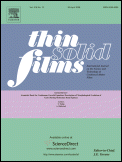
Nowak, Ewelina; Szybowicz, Mirosław; Sędzicki, Przemysław; Stachowiak, Alicja; Piechowiak, Daria; Trzcinski, Marek; Koczorowski, Wojciech; Derkowska-Zielińska, Beata; Miklaszewski, Andrzej; Chłopocka, Edyta
Spectroscopic study on the influence of post-processing annealing on ZnO films produced with a sol-gel method Journal Article
In: Thin Solid Films, vol. 788, pp. 140154, 2024.
@article{TSF2024,
title = {Spectroscopic study on the influence of post-processing annealing on ZnO films produced with a sol-gel method},
author = {Ewelina Nowak and Mirosław Szybowicz and Przemysław Sędzicki and Alicja Stachowiak and Daria Piechowiak and Marek Trzcinski and Wojciech Koczorowski and Beata Derkowska-Zielińska and Andrzej Miklaszewski and Edyta Chłopocka},
doi = {10.1016/j.tsf.2023.140154},
year = {2024},
date = {2024-01-15},
journal = {Thin Solid Films},
volume = {788},
pages = {140154},
abstract = {Zinc oxide is still one of the most crucial wide bandgap semiconductors for electronics. It is highly used because of its ease of production, doping, and low cost. However, in the production of zinc oxide materials, it is necessary to consider the formation of native defects, which strongly influence the material's properties. Therefore, it is essential to understand the behavior in thin films during the annealing process. The presented work shows the appearance of oxygen and zinc vacancies during annealing at specific temperatures and times. Samples annealed in an oxygen-rich atmosphere change their structural and chemical properties. Specific defects may be detected using Raman spectroscopy, X-ray diffraction, and X-ray photoelectron spectroscopy. In addition, energy bandgap, defects energy, and the thermal dependence of luminescence emission were analyzed as the primary indicators of the changes during the sintering.
Funding from the Ministry of Education and Science (Poland), Project No. 0512/SBAD/2120 and 0511/SBAD/0018},
keywords = {},
pubstate = {published},
tppubtype = {article}
}
Funding from the Ministry of Education and Science (Poland), Project No. 0512/SBAD/2120 and 0511/SBAD/0018
2023

Raczyński, Jan; El-Ahmar, Semir; Nowak, Ewelina; Nowicki, Marek; Czajka, Ryszard; Szybowicz, Mirosław; Koczorowski, Wojciech
Processing of PtSe2 ultra-thin layers using Ar plasma for applications in planar devices Conference
XII Workshop on Applications of Scanning Probe Microscopy – STM/AFM 2023, Zakopane, November 29 - December 3, 2023, (Oral presentation).
@conference{ZAKOPANE2023RC,
title = {Processing of PtSe2 ultra-thin layers using Ar plasma for applications in planar devices },
author = {Jan Raczyński and Semir El-Ahmar and Ewelina Nowak and Marek Nowicki and Ryszard Czajka and Mirosław Szybowicz and Wojciech Koczorowski},
url = {https://www.nanosam.pl/stmafm2023/files/abstracts_2023_v16.pdf},
year = {2023},
date = {2023-12-01},
urldate = {2023-12-01},
booktitle = {XII Workshop on Applications of Scanning Probe Microscopy – STM/AFM 2023},
address = {Zakopane, November 29 - December 3},
abstract = {The systems containing the ultra-thin layers of TMD materials (e.g. PtSe2) exhibit interesting physical properties and can be easily integrated into CMOS technology [1].We propose a procedure for the fabrication of simple electronic devices based on PtSe2 ultra-thin layers using Ar plasma processing on commercially available PtSe2/Al2O3 samples [2]. The report contains a detailed analysis of the influence of the Ar plasma treatment time on a system comprising thin PtSe2 layers with a thickness of 1 to 3 monomolecular layers. The impact of the process on the physical properties of the system is also analyzed using Raman Spectroscopy and Atomic Force Microscopy techniques. The electrical properties of devices based on 3ML PtSe2 are characterized using so called Transfer Line Measurements with electrical contacts consisting of the Ni buffer layer and an Au outer electrode contact (with thicknesses of 20 nm and 40 nm, respectively). The results confirm the effectiveness of the proposed approach in the fabrication of planar nano-electronic devices (1÷3 ML thickness of PtSe2) [3].
Figure 1. Representative AFM images (area of 1.5 × 1.5 μm2) of the samples that present the morphology of the continuous PtSe2 layers with thicknesses: A) 1ML PtSe2, B) 2ML PtSe2, and C) 3ML PtSe2. The z range in all images is 1.75 nm. D) Raman spectra of the samples collected before plasma processing. The intensities are normalized to the maximum value in the individual spectra. The Raman modes corresponding to the PtSe2 layer and the Al2O3 substrate are signed [3].
Acknowledgements:
The authors acknowledge the financial support of the National Science Center, Poland, under Project No. 2019/35/O/ST5/01940 and partially the financial support of the Ministry of Education and Science, Poland under Project No. 0512/SBAD/2320.
[1] J. Raczynski, E. Nowak, M. Nowicki, S.El-Ahmar, M. Szybowicz, W. Koczorowski, Materials Science and Engineering B, 2023, 297, 116728.
[2] S. Joseph, J. Mohan, S. Lakshmy, T. Simil, B. Chakraborty, T. Sabu, N. Kalarikkal, Materials Chemistry and Physics, 2023, 297, 127332.
[3] W. Koczorowski, J. Raczyński, S. El-Ahmar, M. Nowicki, M. Szybowicz, R. Czajka, Materials Science in Semiconductor Processing, 2023, 167, 107814.},
note = {Oral presentation},
keywords = {},
pubstate = {published},
tppubtype = {conference}
}
Figure 1. Representative AFM images (area of 1.5 × 1.5 μm2) of the samples that present the morphology of the continuous PtSe2 layers with thicknesses: A) 1ML PtSe2, B) 2ML PtSe2, and C) 3ML PtSe2. The z range in all images is 1.75 nm. D) Raman spectra of the samples collected before plasma processing. The intensities are normalized to the maximum value in the individual spectra. The Raman modes corresponding to the PtSe2 layer and the Al2O3 substrate are signed [3].
Acknowledgements:
The authors acknowledge the financial support of the National Science Center, Poland, under Project No. 2019/35/O/ST5/01940 and partially the financial support of the Ministry of Education and Science, Poland under Project No. 0512/SBAD/2320.
[1] J. Raczynski, E. Nowak, M. Nowicki, S.El-Ahmar, M. Szybowicz, W. Koczorowski, Materials Science and Engineering B, 2023, 297, 116728.
[2] S. Joseph, J. Mohan, S. Lakshmy, T. Simil, B. Chakraborty, T. Sabu, N. Kalarikkal, Materials Chemistry and Physics, 2023, 297, 127332.
[3] W. Koczorowski, J. Raczyński, S. El-Ahmar, M. Nowicki, M. Szybowicz, R. Czajka, Materials Science in Semiconductor Processing, 2023, 167, 107814.

Reddig, Wiktoria; Przychodnia, Marta; Ciuk, Tymoteusz; El-Ahmar, Semir
IEEE SENSORS 2023, Vienna, October 29 - November 2, 2023, (Oral presentation).
@conference{IEEESENSORS2023WR,
title = {High-Temperature Stability of Sensor Platforms Designed to Detect Magnetic Fields in a Harmful Radiation Environment},
author = {Wiktoria Reddig and Marta Przychodnia and Tymoteusz Ciuk and Semir El-Ahmar},
url = {https://ieeexplore.ieee.org/document/10189897},
year = {2023},
date = {2023-10-31},
booktitle = {IEEE SENSORS 2023},
address = {Vienna, October 29 - November 2},
abstract = {Modern 2-D carbon materials are being increasingly studied as potential magnetic field sensors for use in environments with harmful radiation, such as neutron radiation present in future fusion reactors. Potential radiation resistance is also demonstrated by classical semiconductor thin-film materials, after appropriate doping. A necessary condition for the potential neutron-resistant sensor is high-temperature stability. In this letter, we bring together two leading high-temperature sensing platforms: graphene-based and Sn-doped InSb-based. Our study focuses on their thermal stability under identical high-temperature and time conditions. We utilized long-term annealing procedures combined with the simultaneous measurement of the Hall effect to reflect both, the temperature conditions during radiation tests of these platforms performed recently in the MARIA research nuclear reactor, as well as postradiation temperature treatment. We showed that long-term annealing at fixed temperature can affect the graphene-based platform to a greater extent; however, variable temperature tests showed better stability of this system. The InSb-based platform, on the other hand, exhibits much better temperature stability when operating up to 200 °C.
Funding from the Ministry of Education and Science (Poland), Project No. 0512/SBAD/2320
Funding from the National Centre for Research and Development (Poland), Project “MAGSET” No. LIDER/8/0021/L- 11/19/NCBR/2020},
note = {Oral presentation},
keywords = {},
pubstate = {published},
tppubtype = {conference}
}
Funding from the Ministry of Education and Science (Poland), Project No. 0512/SBAD/2320
Funding from the National Centre for Research and Development (Poland), Project “MAGSET” No. LIDER/8/0021/L- 11/19/NCBR/2020

El-Ahmar, Semir; Jankowski, Jakub; Czaja, Paweł; Reddig, Wiktoria; Przychodnia, Marta; Raczyński, Jan; Koczorowski, Wojciech
Magnetic Field Sensor Operating From Cryogenics to Elevated Temperatures Conference
IEEE SENSORS 2023, Vienna, October 29 - November 2, 2023, (Oral presentation).
@conference{IEEESENSORS2023SA,
title = {Magnetic Field Sensor Operating From Cryogenics to Elevated Temperatures},
author = {Semir El-Ahmar and Jakub Jankowski and Paweł Czaja and Wiktoria Reddig and Marta Przychodnia and Jan Raczyński and Wojciech Koczorowski},
url = {https://ieeexplore.ieee.org/document/10180063},
year = {2023},
date = {2023-10-31},
booktitle = {IEEE SENSORS 2023},
address = {Vienna, October 29 - November 2},
abstract = {Magnetic field sensors, based on the Hall effect, in mass production currently have a standard operating temperature limit of 150 °C. There are sensors designed for specific purposes that can function within a limited range of up to 225 °C or even at the temperature of liquid nitrogen or liquid helium. The technology for the production of magnetic field sensors enabling operation in industrial conditions at temperatures significantly exceeding 225 °C or in the full range of temperatures from cryogenics to elevated temperatures (reaching 350 °C) has not yet been developed. In this letter, we present a reliable and high-quality magnetic field sensor that is capable of functioning under a wide range of temperatures. The sensor was developed using mainly the academic infrastructure of the Poznan University of Technology and can be suitable for industrial use.
Funding from the Ministry of Education and Science (Poland), Project No. 0512/SBAD/2320
Funding from the National Centre for Research and Development (Poland), Project “MAGSET” No. LIDER/8/0021/L- 11/19/NCBR/2020},
note = {Oral presentation},
keywords = {},
pubstate = {published},
tppubtype = {conference}
}
Funding from the Ministry of Education and Science (Poland), Project No. 0512/SBAD/2320
Funding from the National Centre for Research and Development (Poland), Project “MAGSET” No. LIDER/8/0021/L- 11/19/NCBR/2020
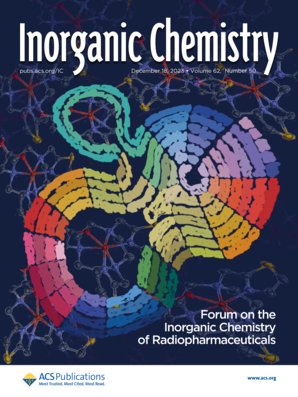
Mrzygłód, Aleksandra; Armada, M. Pilar Garcia; Rzonsowska, Monika; Dudziec, Beata; Nowicki, Marek
Metallodendrimers Unveiled: Investigating the Formation and Features of Double-Decker Silsesquioxane-Based Silylferrocene Dendrimers Journal Article
In: Inorganic Chemistry, vol. 62, iss. 41, pp. 16932−16942, 2023.
@article{mrzyglod2023,
title = {Metallodendrimers Unveiled: Investigating the Formation and Features of Double-Decker Silsesquioxane-Based Silylferrocene Dendrimers},
author = {Aleksandra Mrzygłód and M. Pilar Garcia Armada and Monika Rzonsowska and Beata Dudziec and Marek Nowicki},
doi = {10.1021/acs.inorgchem.3c02628},
year = {2023},
date = {2023-09-29},
urldate = {2023-09-29},
journal = {Inorganic Chemistry},
volume = {62},
issue = {41},
pages = {16932−16942},
abstract = {Dendrimers exhibiting reversible redox properties have attracted extensive attention for their potential as electron transfer mediators, catalysts, and molecular sensors. In this study, we introduce intriguing G1 and G2 dendrimers featuring double-decker silsesquioxane cores and silylferrocene moieties. Through a carefully orchestrated sequence of condensation, reduction, and hydrosilylation reactions, these compounds were synthesized and comprehensively characterized spectroscopically and spectrometrically. Our investigation also encompassed the examination of their properties, including thermal stability, solubility in common organic solvents, and electrochemical behavior. We determined that these dendrimers possess the capability to form monolayers on platinum electrodes, which we conclusively demonstrated through the probing of cyclic voltammetry, electrochemical impedance spectroscopy, and scanning electron microscopy imaging. Notably, this study marks the first-ever example of modifying doubledecker silsesquioxane cores with ferrocene groups while simultaneously representing one of the scarce instances of dendrimers
exhibiting an open double-decker silsesquioxane core.},
keywords = {},
pubstate = {published},
tppubtype = {article}
}
exhibiting an open double-decker silsesquioxane core.
El-Ahmar, Semir; Czaja, Paweł; Reddig, Wiktoria; Przychodnia, Marta; Raczyński, Jan; Koczorowski, Wojciech
European Conference on Surface Science (ECOSS 36), Lodz, August 28 - September 1, 2023, (Oral presentation).
@conference{ECOSS2023SA,
title = {Two-dimensional and thin-film active layers for magnetic field detection in extreme temperature range},
author = {Semir El-Ahmar and Paweł Czaja and Wiktoria Reddig and Marta Przychodnia and Jan Raczyński and Wojciech Koczorowski},
url = {https://nano.put.poznan.pl/wp-content/uploads/2023/09/abstract_SA.pdf},
year = {2023},
date = {2023-08-31},
booktitle = {European Conference on Surface Science (ECOSS 36)},
address = {Lodz, August 28 - September 1},
abstract = {Detecting magnetic fields can serve as a means of measuring various quantities like position, movement, direction, and rotational speed. This makes magnetic field detection devices highly useful in many industries. Today, electronics that can function dependably in harsh environments are in high demand, including those that can withstand extreme temperatures. Traditional electronics design often requires active or passive cooling, but this may not always be practical or effective. As a result, there is a growing need for extreme environment electronics, particularly in the automotive, space, defense, and energy industries [1]. Our research explores the potential of utilizing modern two-dimensional material, epitaxial graphene on SiC [2] and classic semiconductor thin-film material (n-InSb) [3] as active layers for sensor structures that can measure magnetic fields from cryogenic temperatures up to 350 °C. Using the developed procedures for temperature testing of the manufactured systems, with simultaneous, cyclical measurement of the Hall effect, we can assess the temperature resistance of the tested systems both
in terms of thermal and long-term stability. The conducted research on the active layer and the structure of the sensor is supplemented with temperature tests of the construction materials of the housing of the future device.
Funding from the Ministry of Education and Science (Poland), Project No. 0512/SBAD/2320
Funding from the National Centre for Research and Development (Poland), Project “MAGSET” No. LIDER/8/0021/L- 11/19/NCBR/2020},
note = {Oral presentation},
keywords = {},
pubstate = {published},
tppubtype = {conference}
}
in terms of thermal and long-term stability. The conducted research on the active layer and the structure of the sensor is supplemented with temperature tests of the construction materials of the housing of the future device.
Funding from the Ministry of Education and Science (Poland), Project No. 0512/SBAD/2320
Funding from the National Centre for Research and Development (Poland), Project “MAGSET” No. LIDER/8/0021/L- 11/19/NCBR/2020
Grzela, Tomasz; Bazarnik, Maciej
On-surface metalation of salophene molecules with Dy on Au(111) substrate Conference
European Conference on Surface Science (ECOSS 36), Lodz, August 28 - September 1, 2023, (Oral presentation).
@conference{ECOSS2023TG,
title = {On-surface metalation of salophene molecules with Dy on Au(111) substrate},
author = {Tomasz Grzela and Maciej Bazarnik},
url = {https://nano.put.poznan.pl/wp-content/uploads/2023/09/abstract_TG.pdf},
year = {2023},
date = {2023-08-30},
booktitle = {European Conference on Surface Science (ECOSS 36)},
address = {Lodz, August 28 - September 1},
abstract = {In recent years, metal-organic complexes have garnered much interest as an active area of research as a result of their enormous potential application in, e.g.: high-efficiency organic light-emitting devices, solar cells, photodetectors, or in electrocatalysis [1,2]. Metal-organic complexes are also a promising pathway for microelectronic miniaturization and open up new possibilities in the development of spintronics [3-5]. Since not all complexes are stable in air, in situ on-surface metalation is an attractive alternative to wet chemistry. On-surface metalation of 5,5′-dibromosalophene with 3d transition metals (Co, Fe and Cr) on Cointercalated graphene grown on Ir (111) was shown to be a promising pathway to vary magnetic and electronic properties of metal−organic complexes [6]. Moreover, on-surface metalation gives clean samples of various different metal−organic complexes, without any pollution or contaminations. Within this contribution, we present results focused on in situ under UHV conditions, the on-surface metalation process of 5,5’-dibromosalophene with dysprosium. The metalation is realized in a twostep process deposition of the rare-earth metal atoms on sample kept at room temperature, followed by postprocessing annealing at elevated temperatures. The morphology and electronic structure of the obtained salophene complexes were investigated by using a combination of scanning tunneling
microscopy and spectroscop.},
note = {Oral presentation},
keywords = {},
pubstate = {published},
tppubtype = {conference}
}
microscopy and spectroscop.
